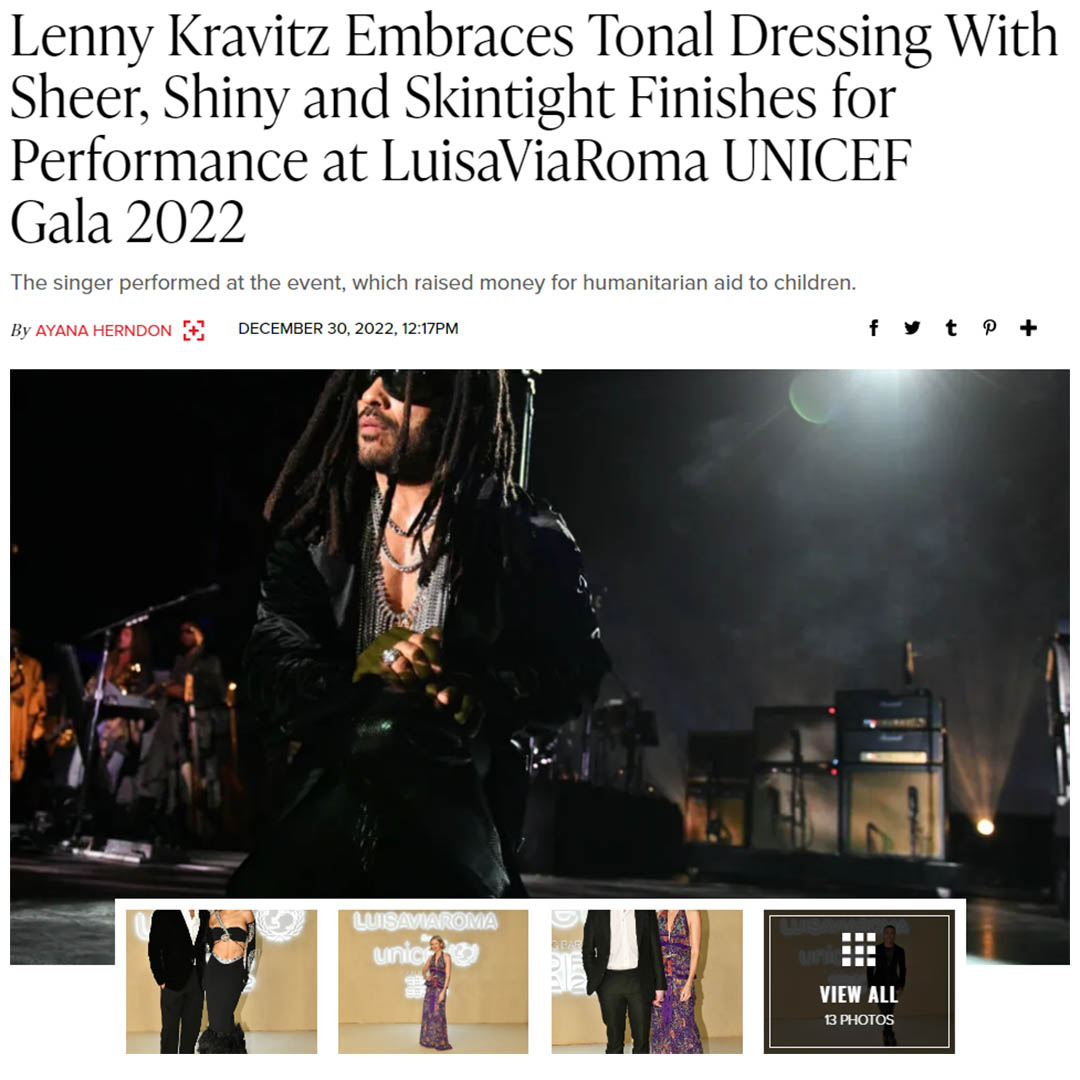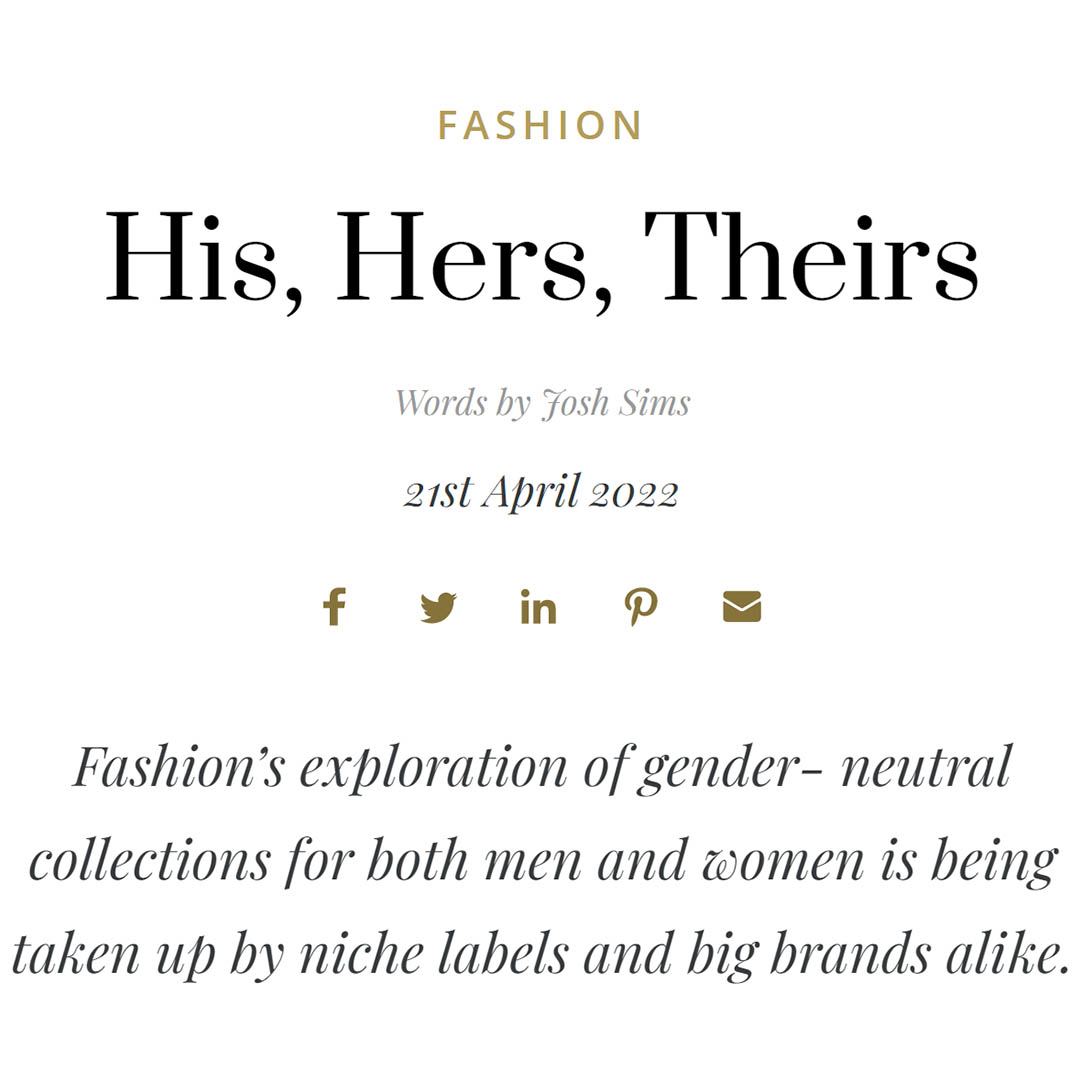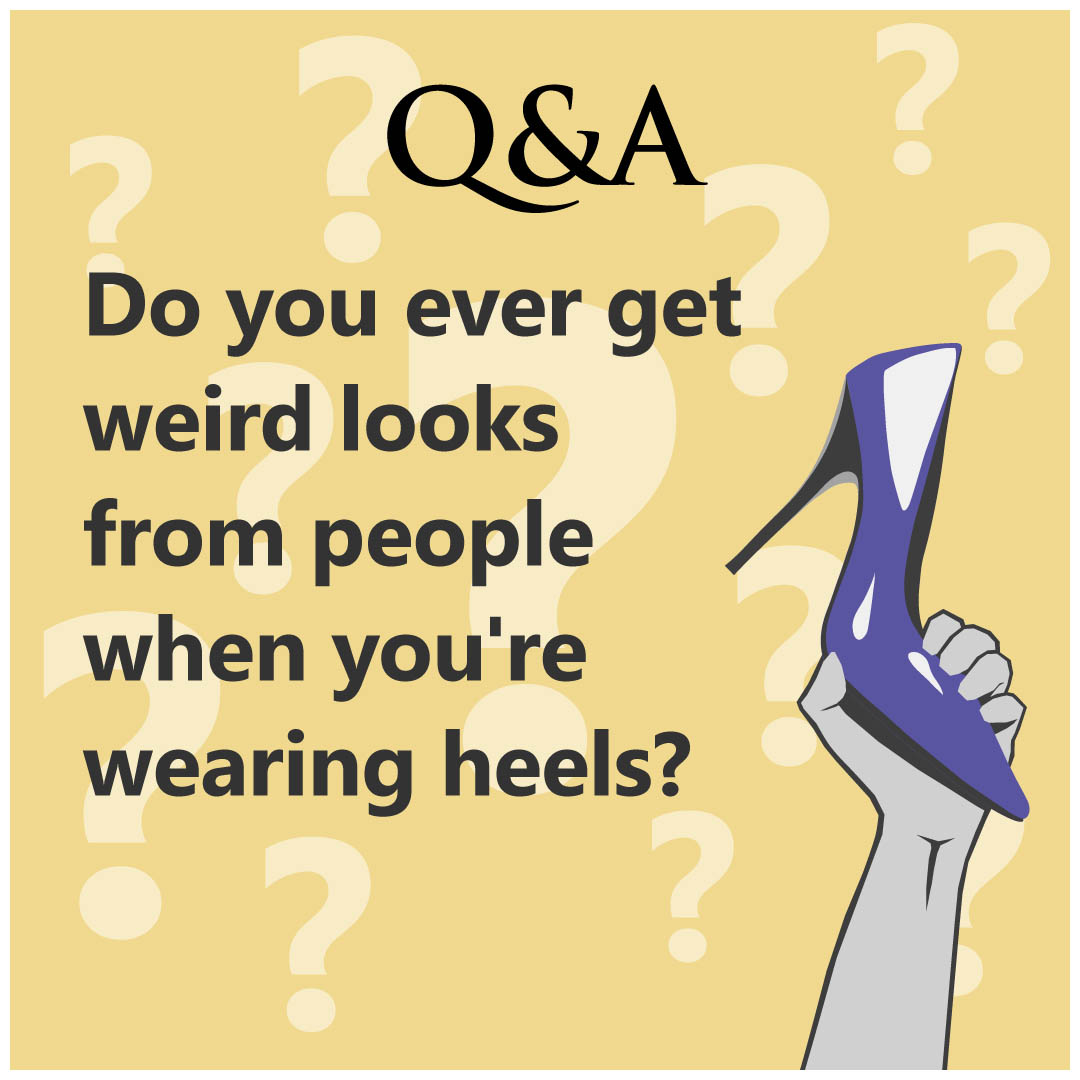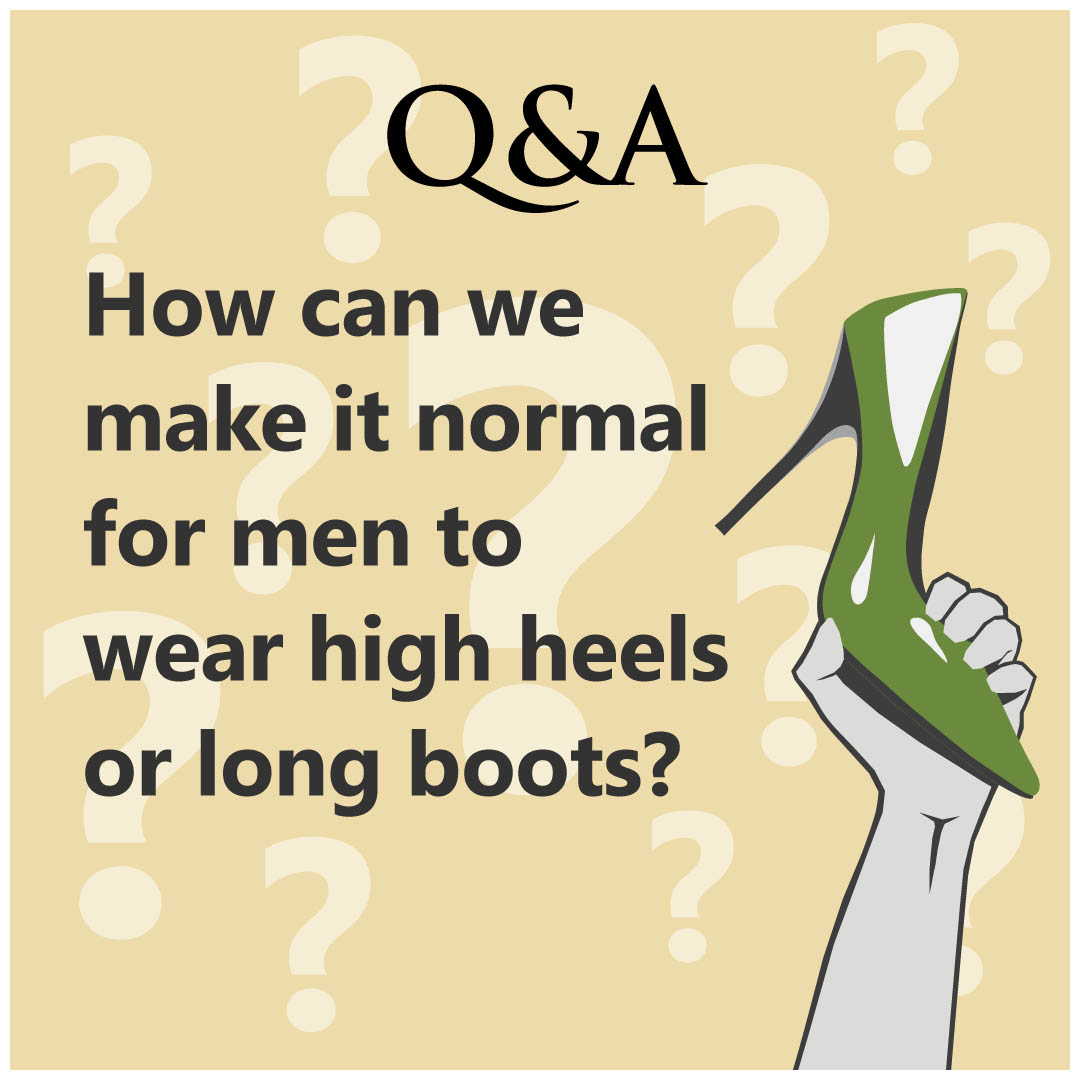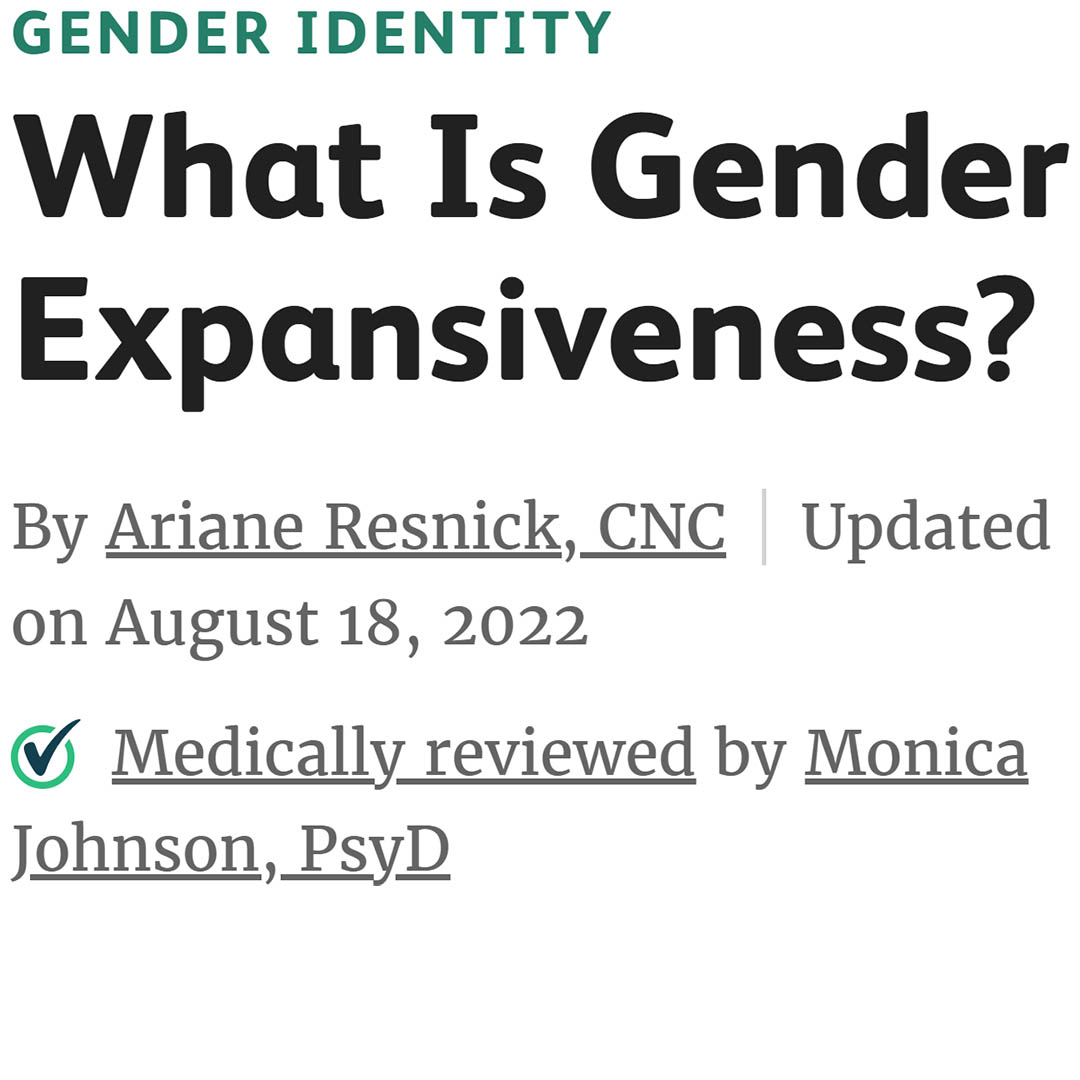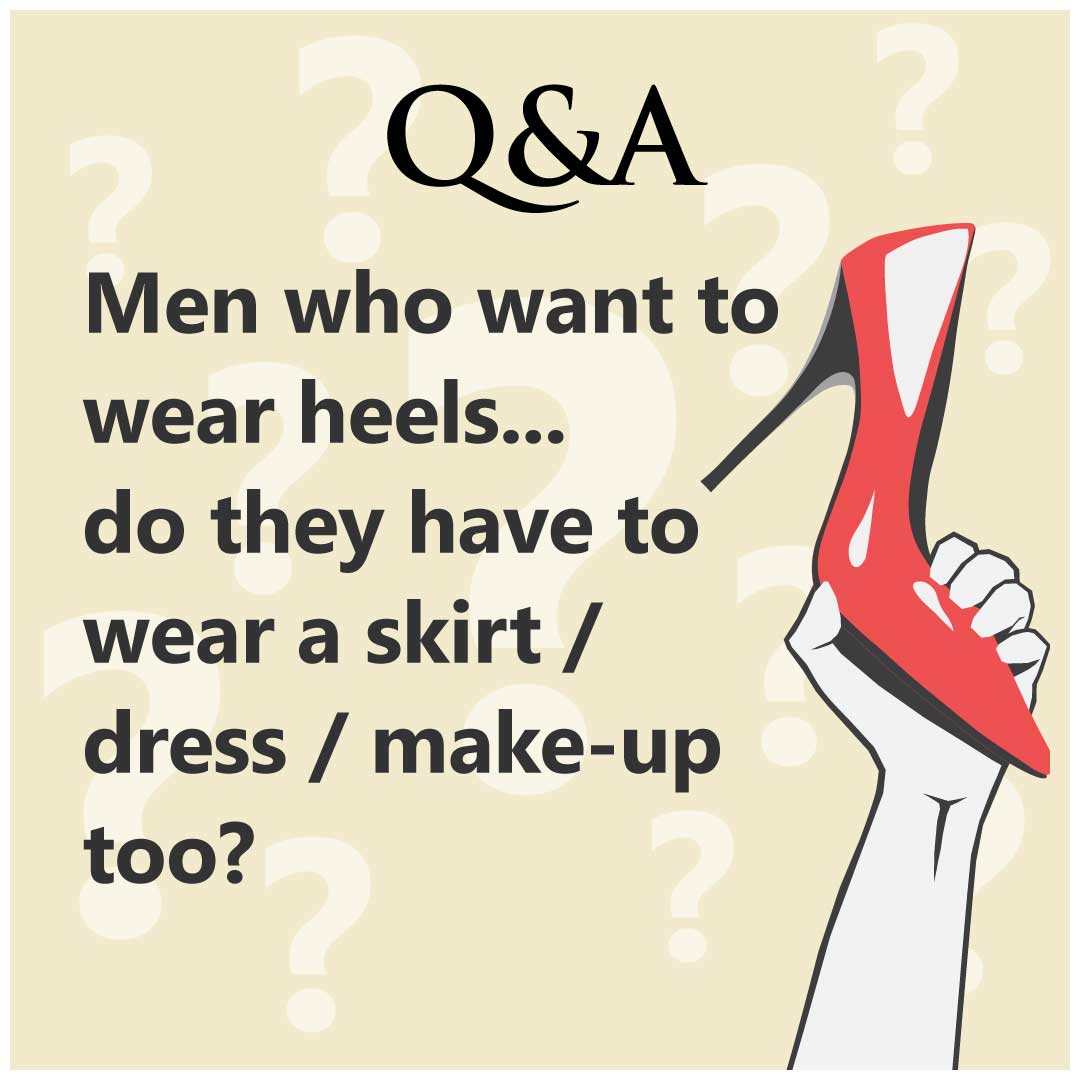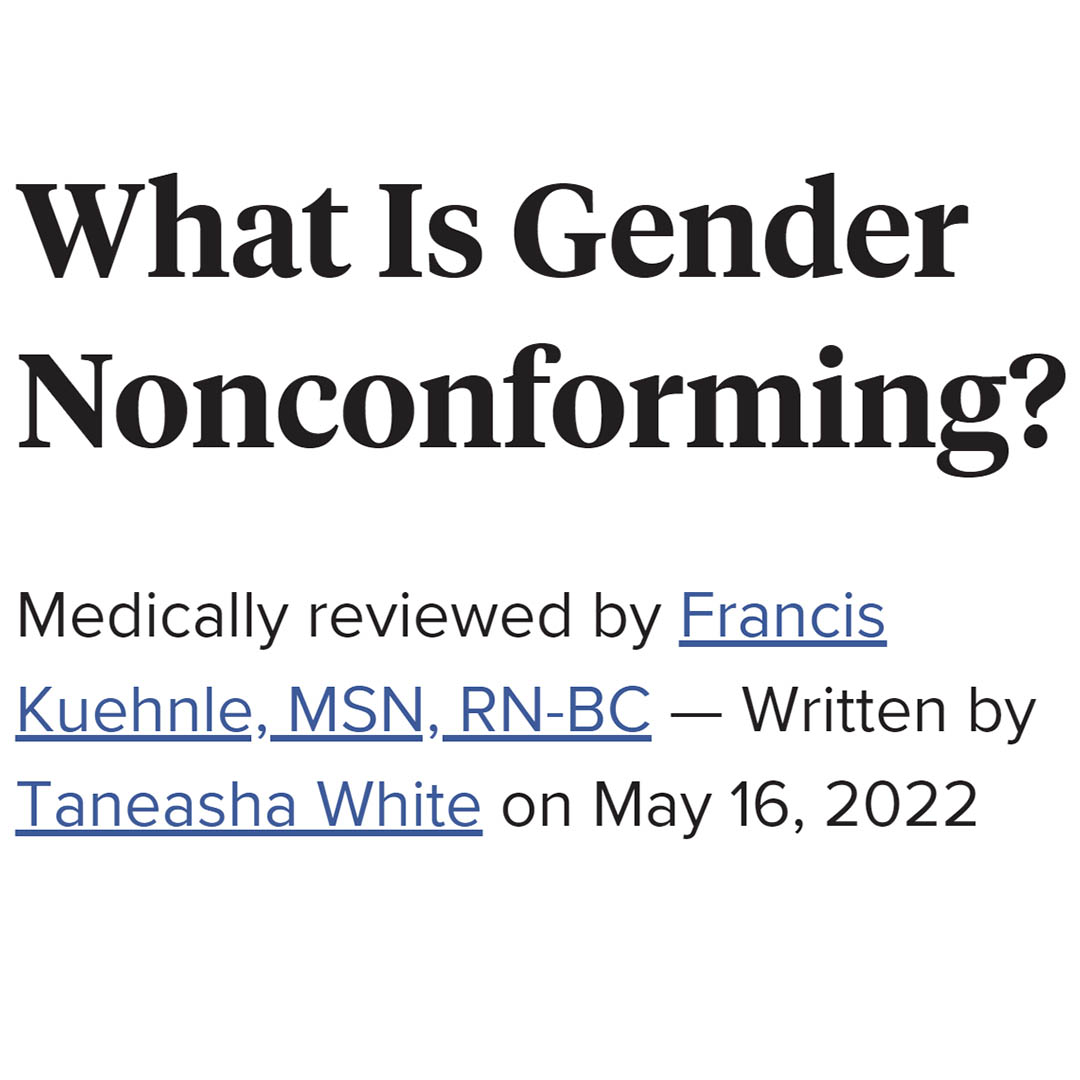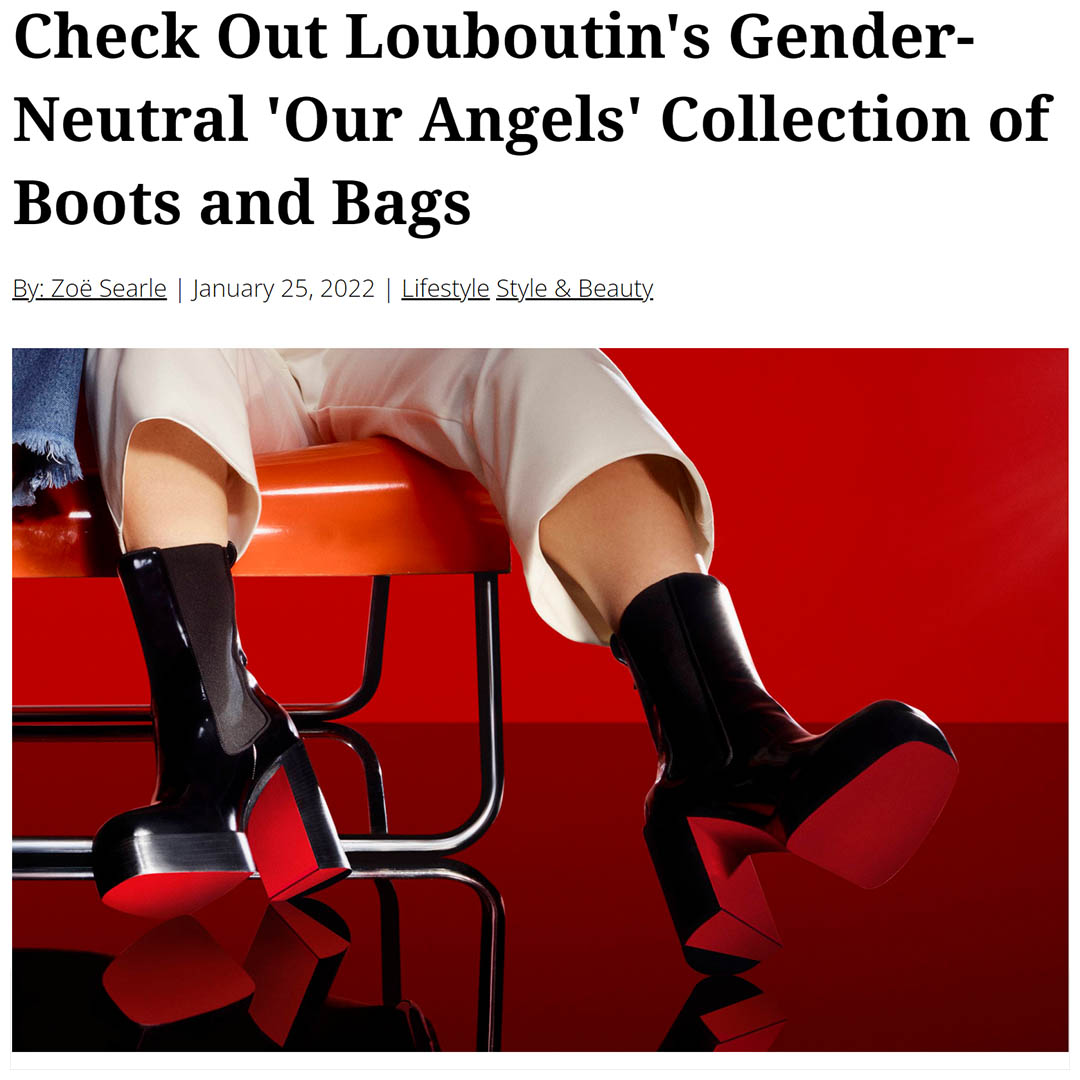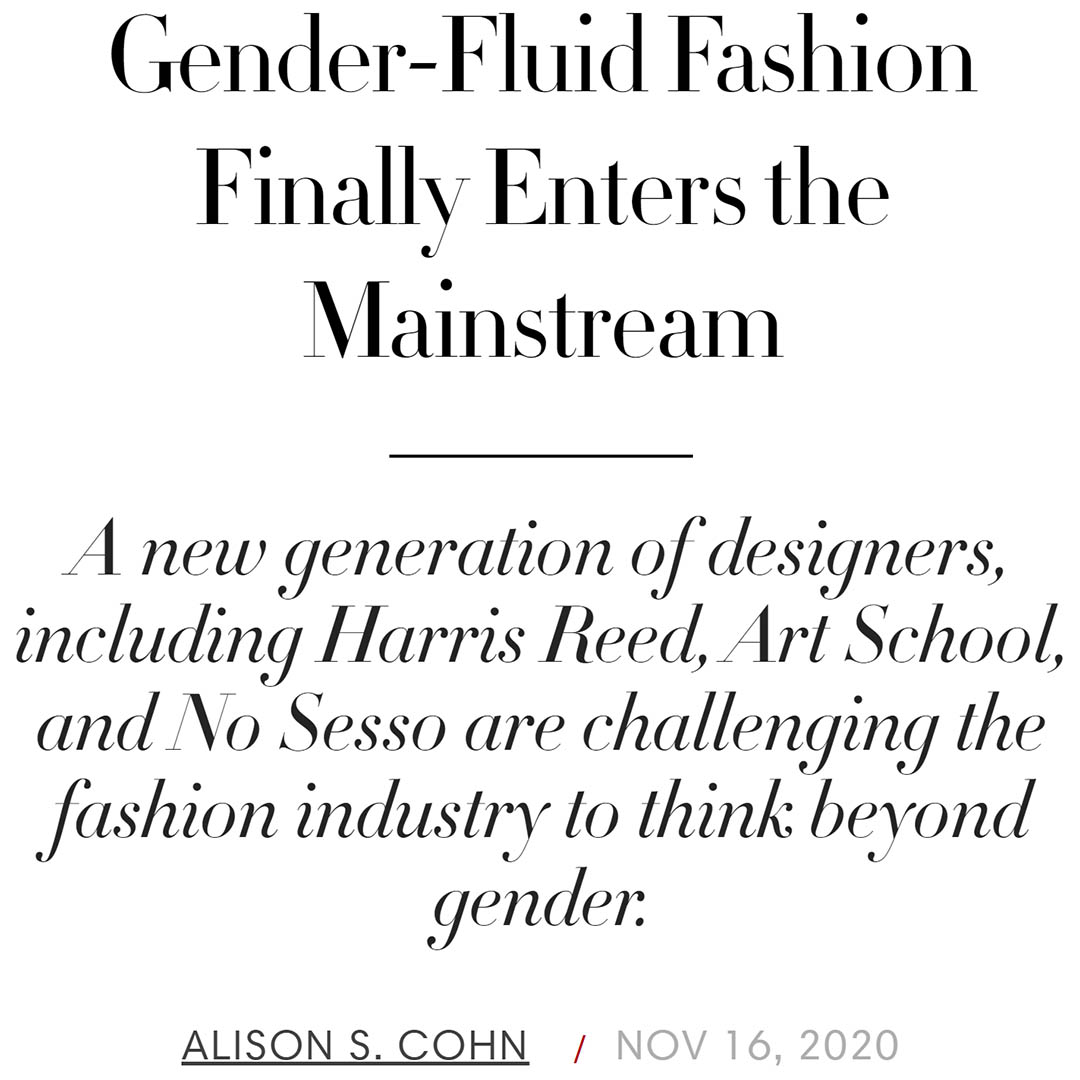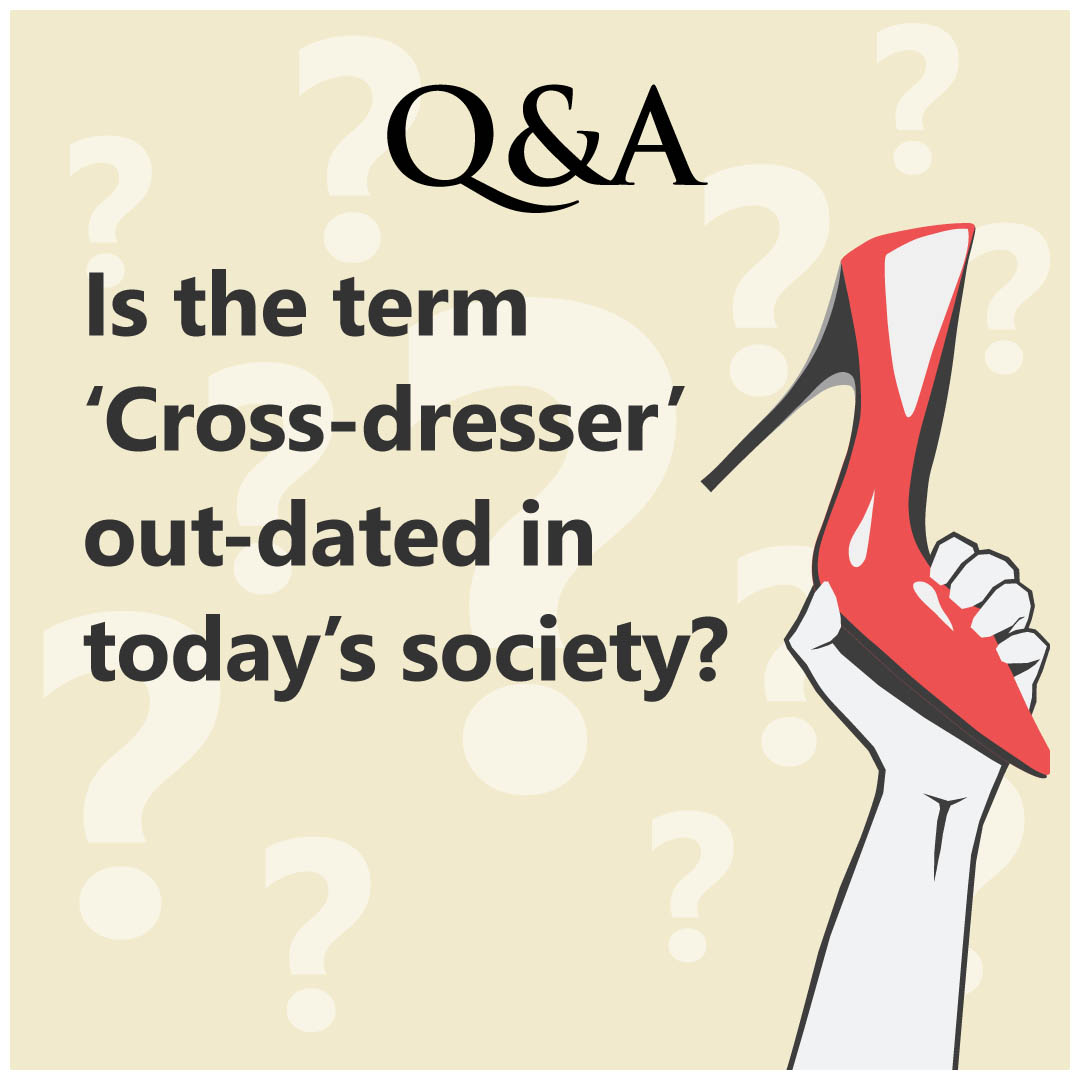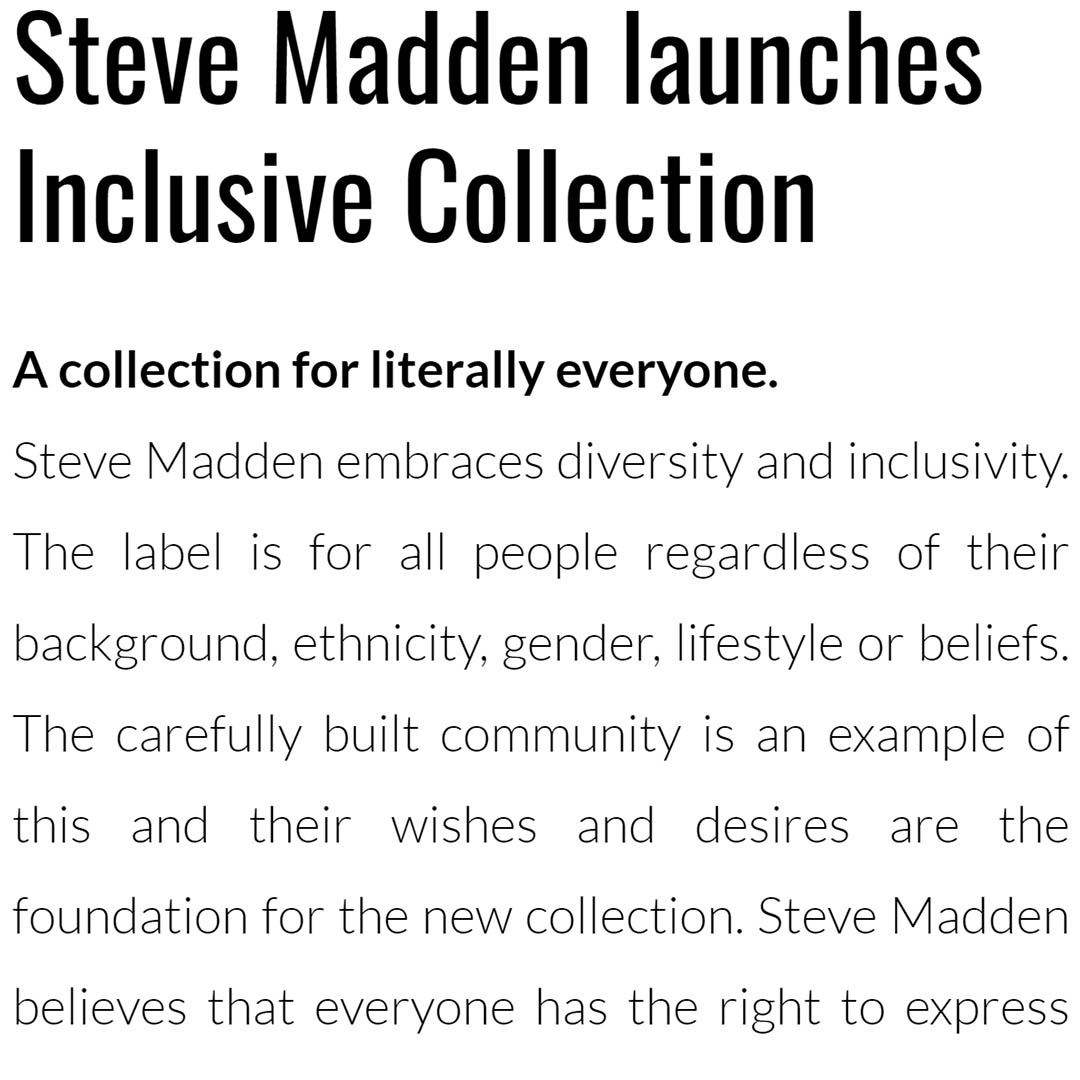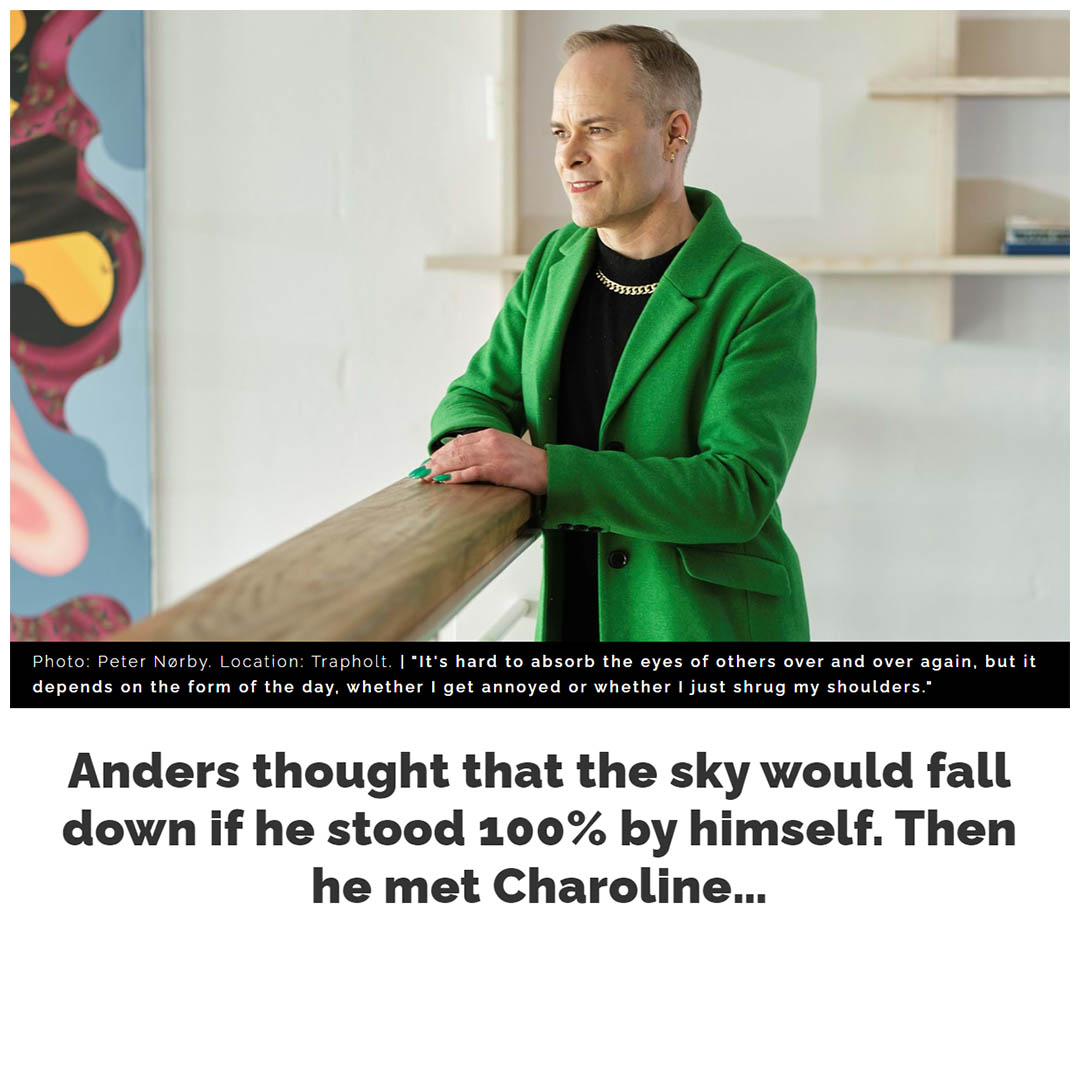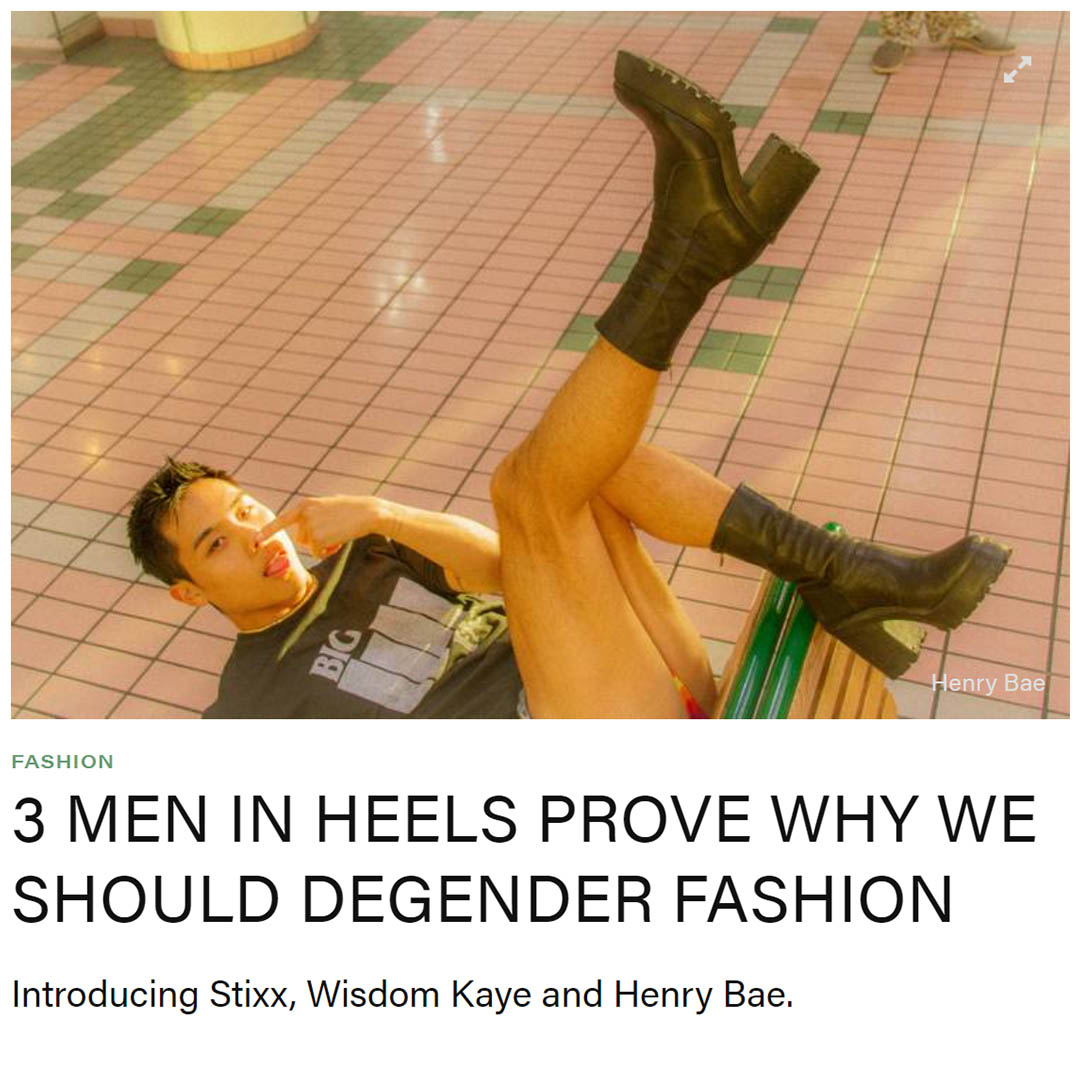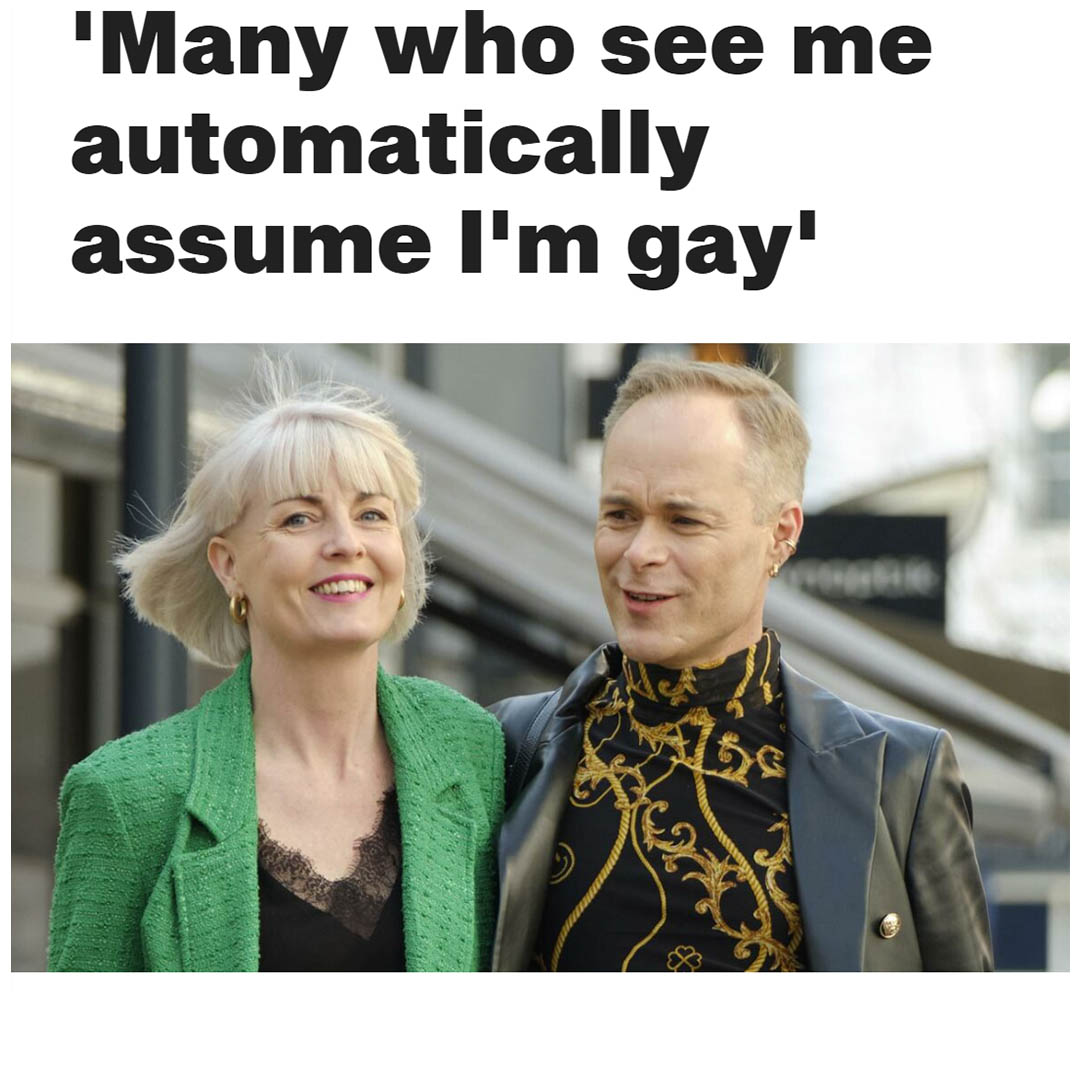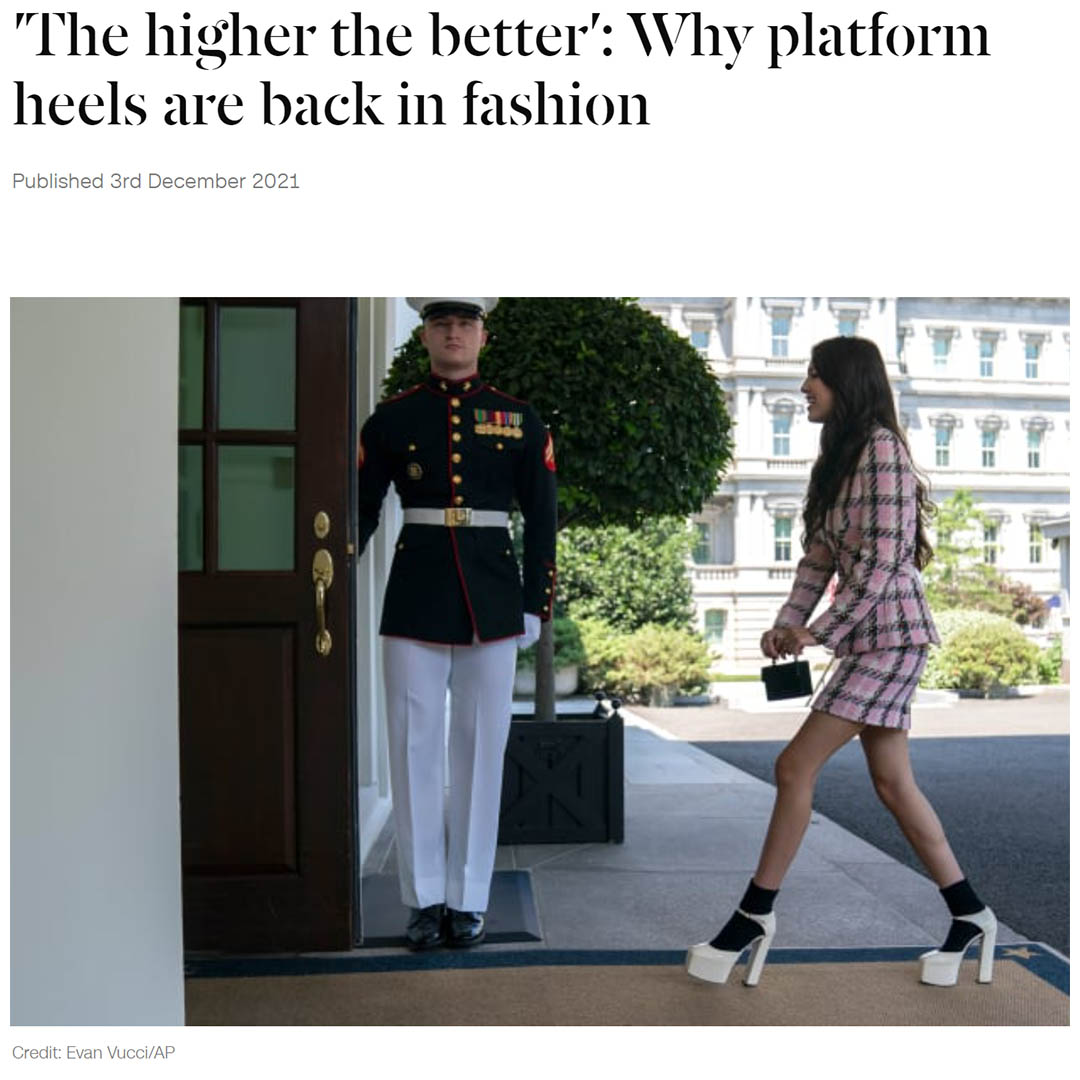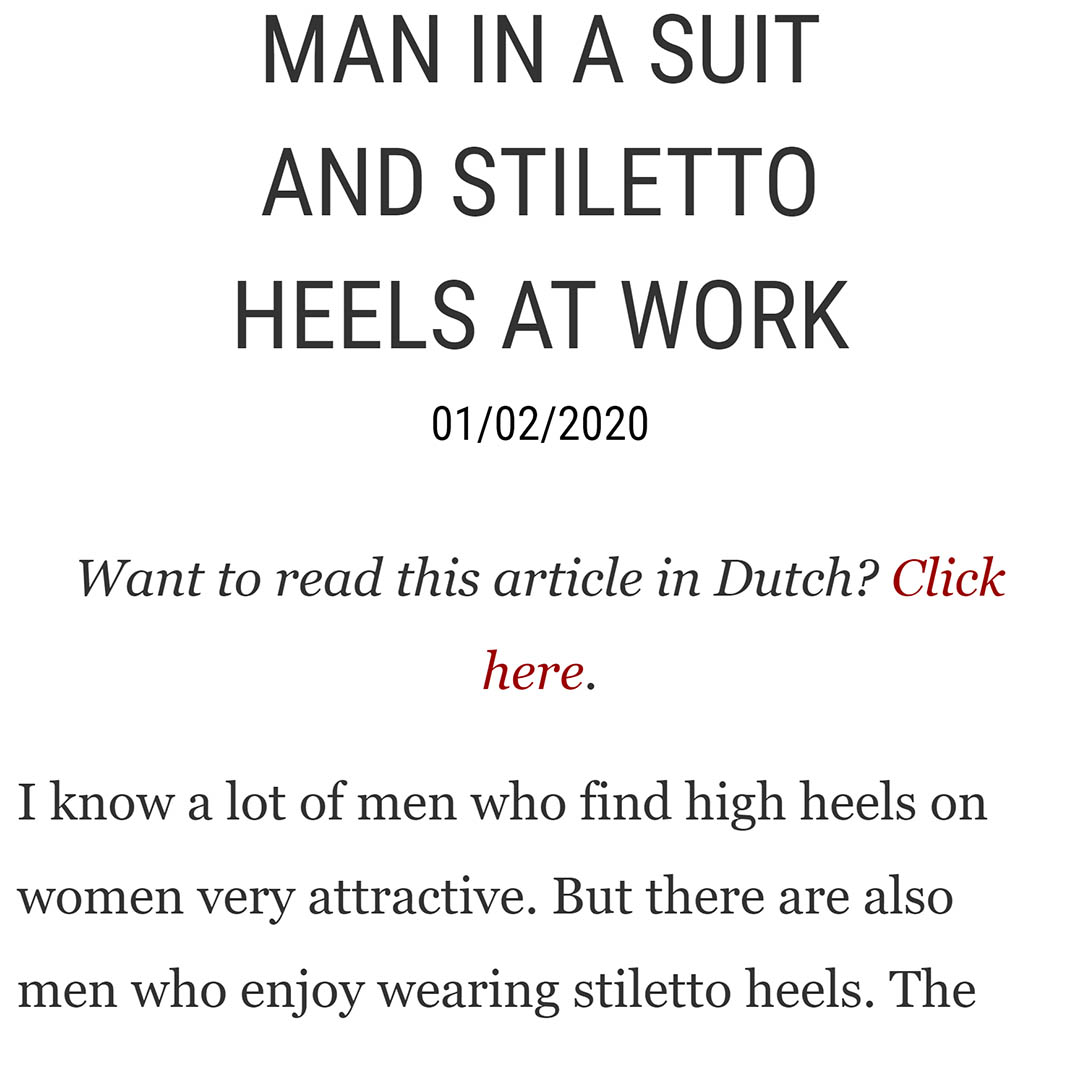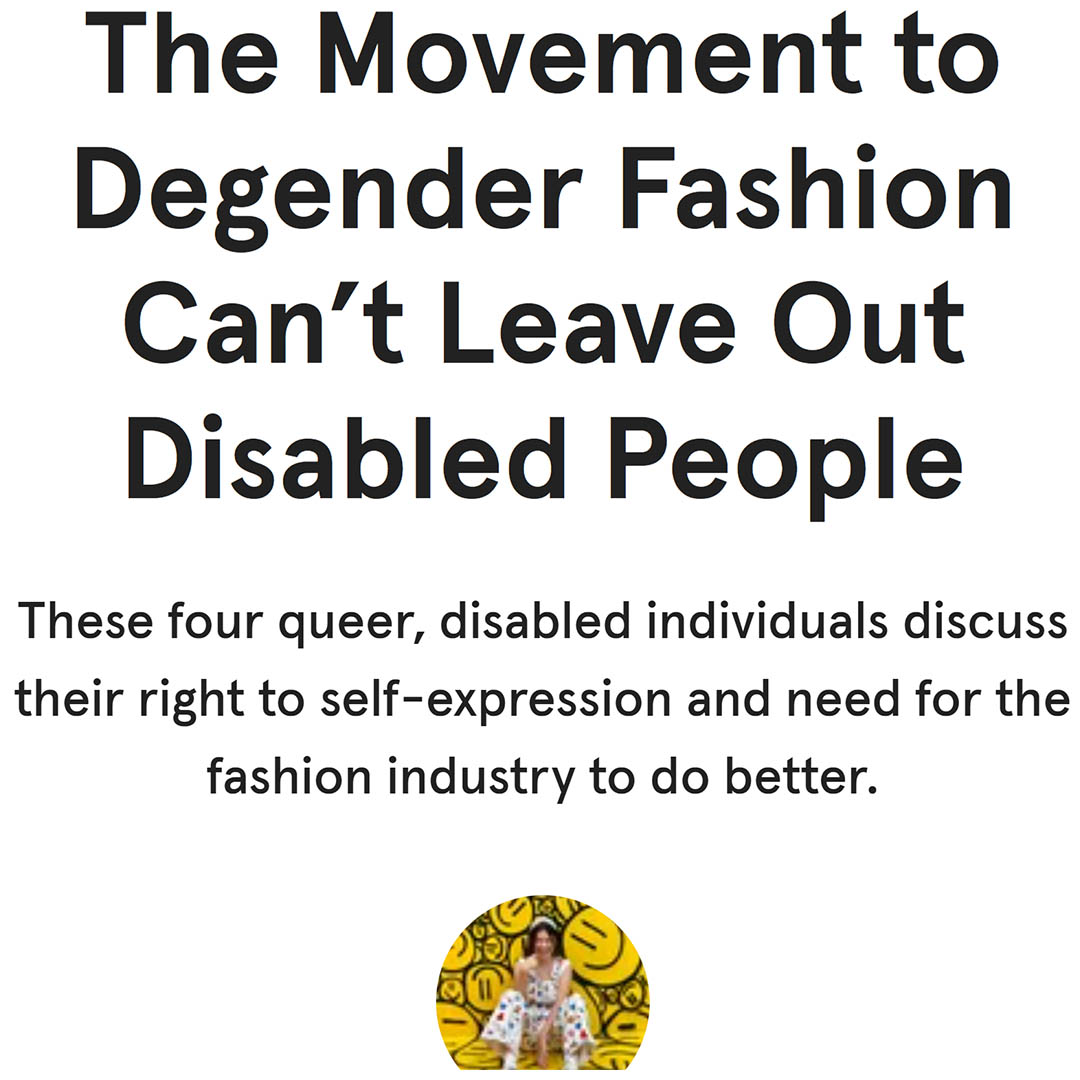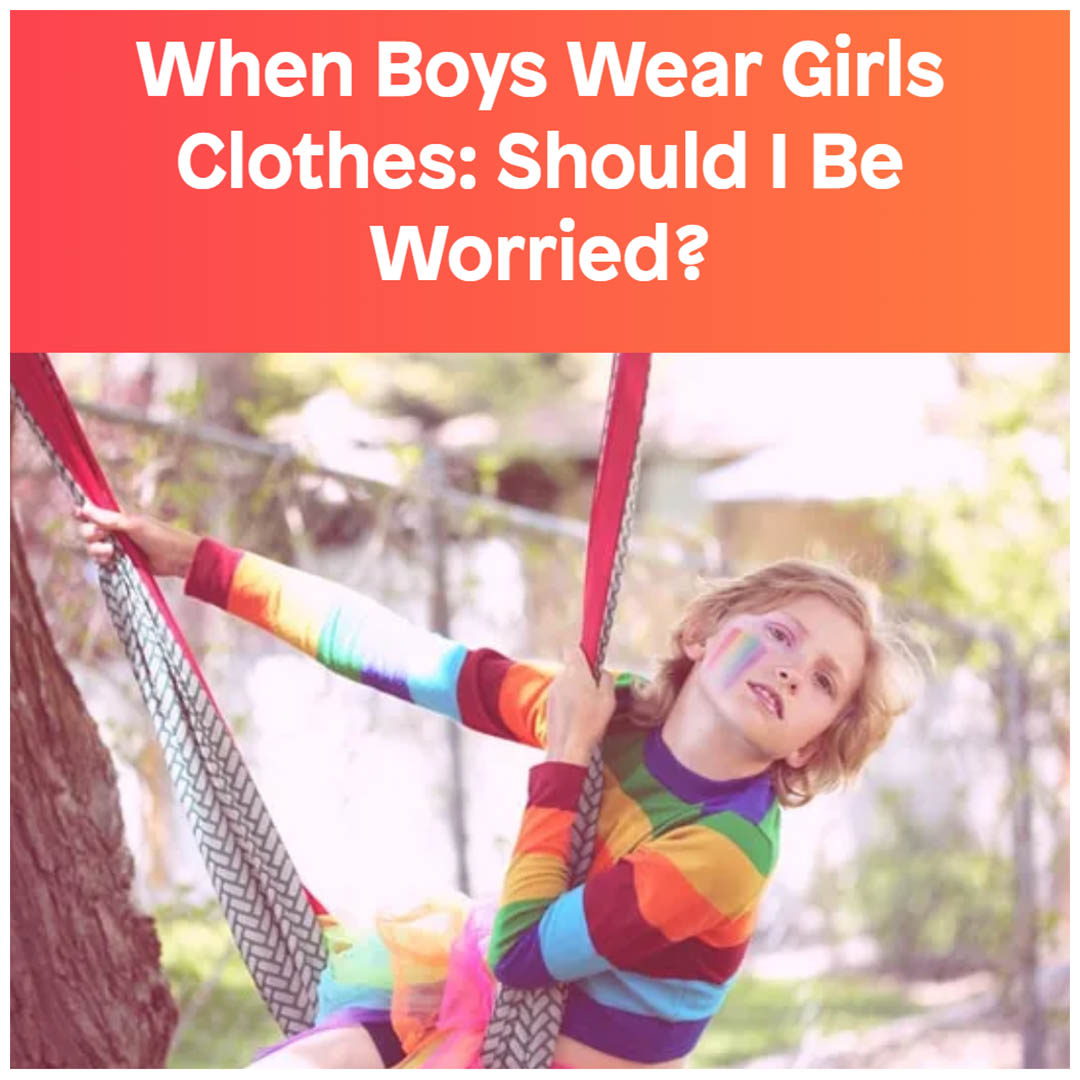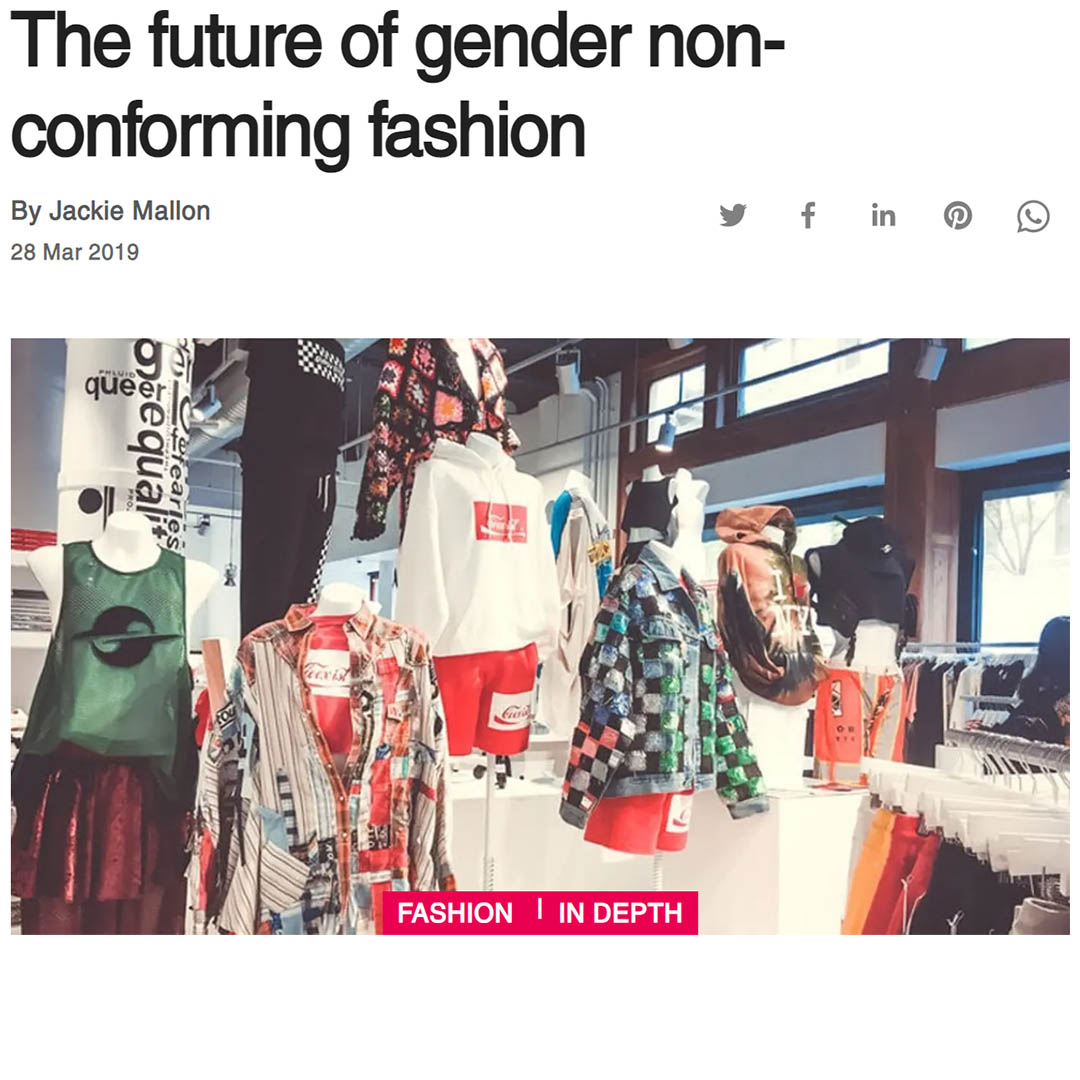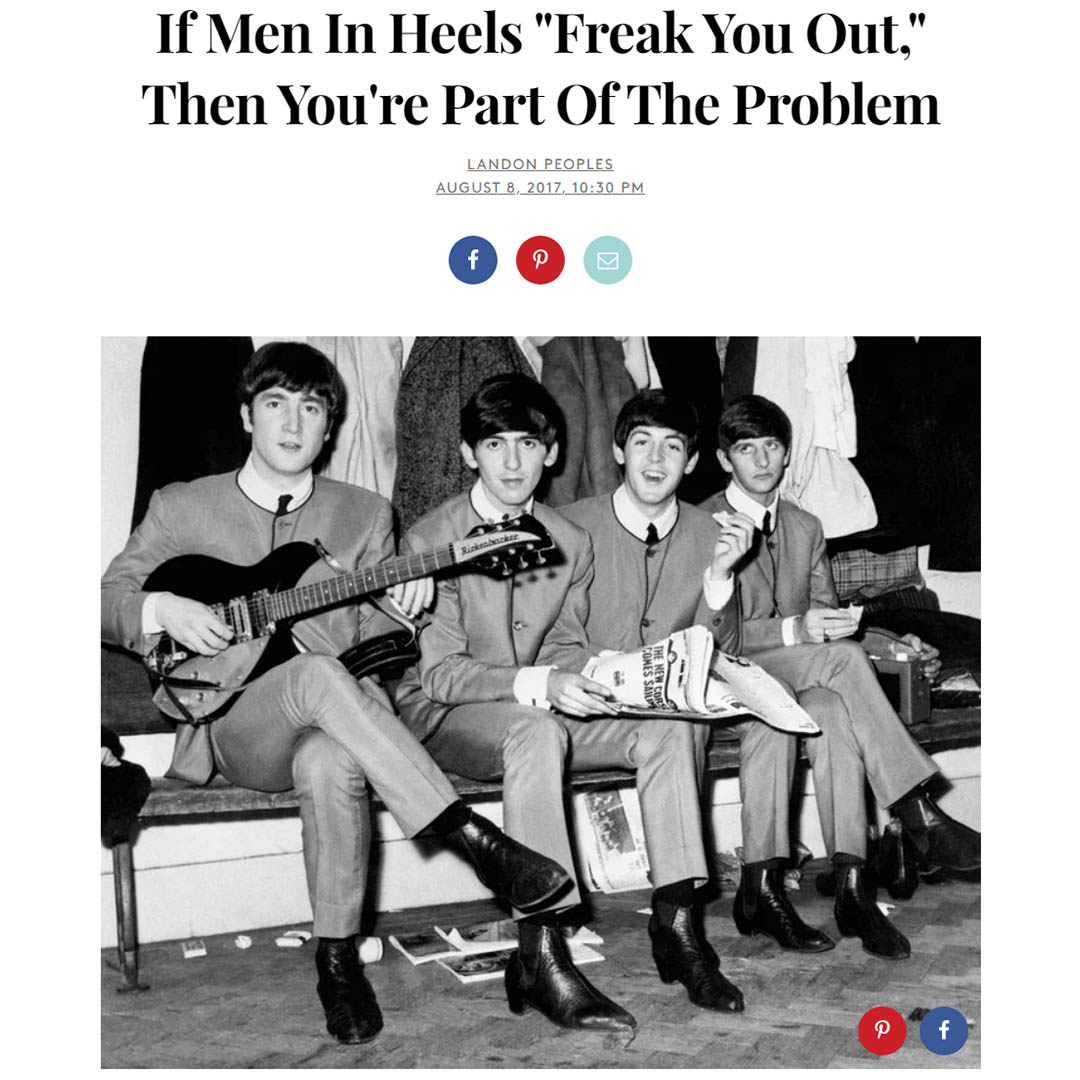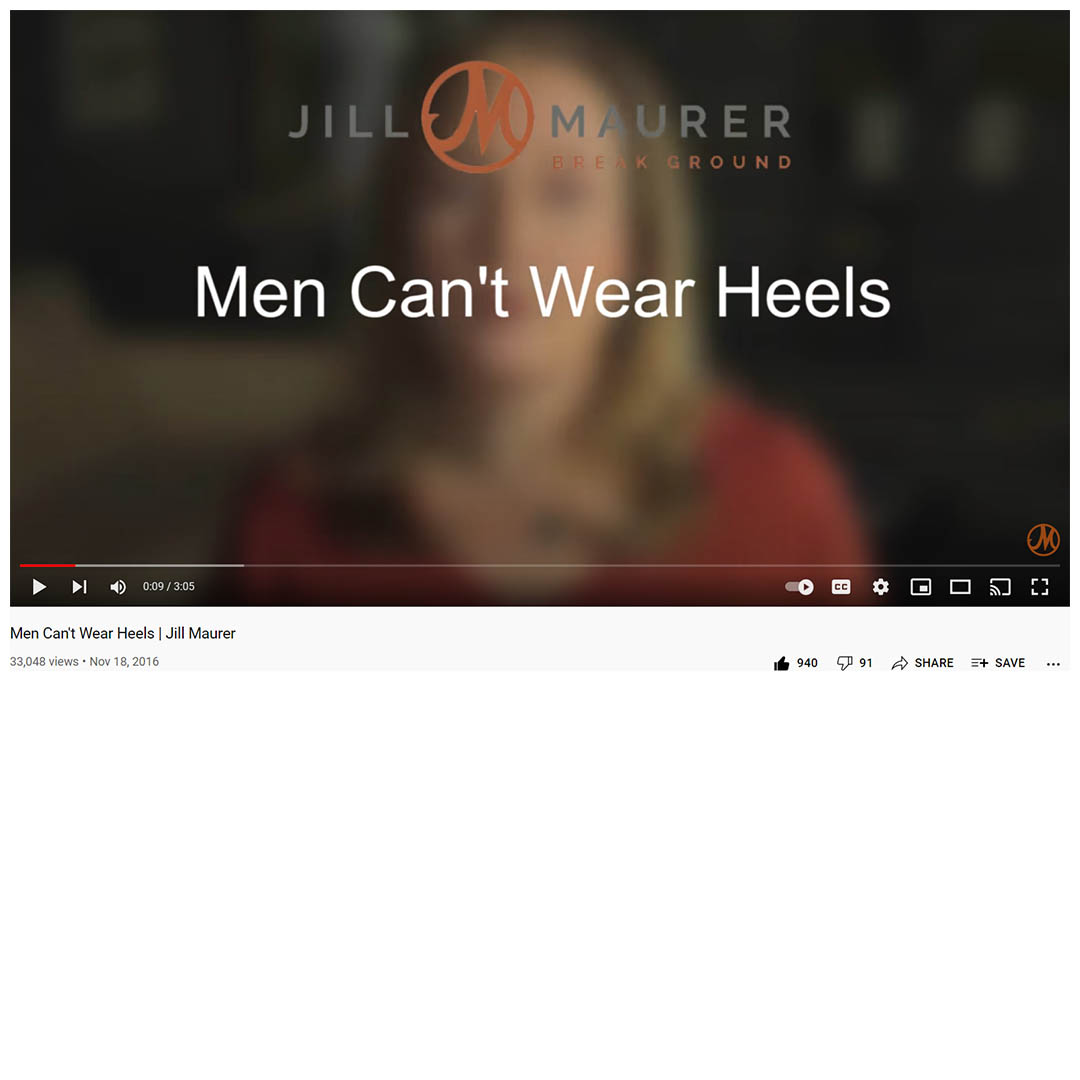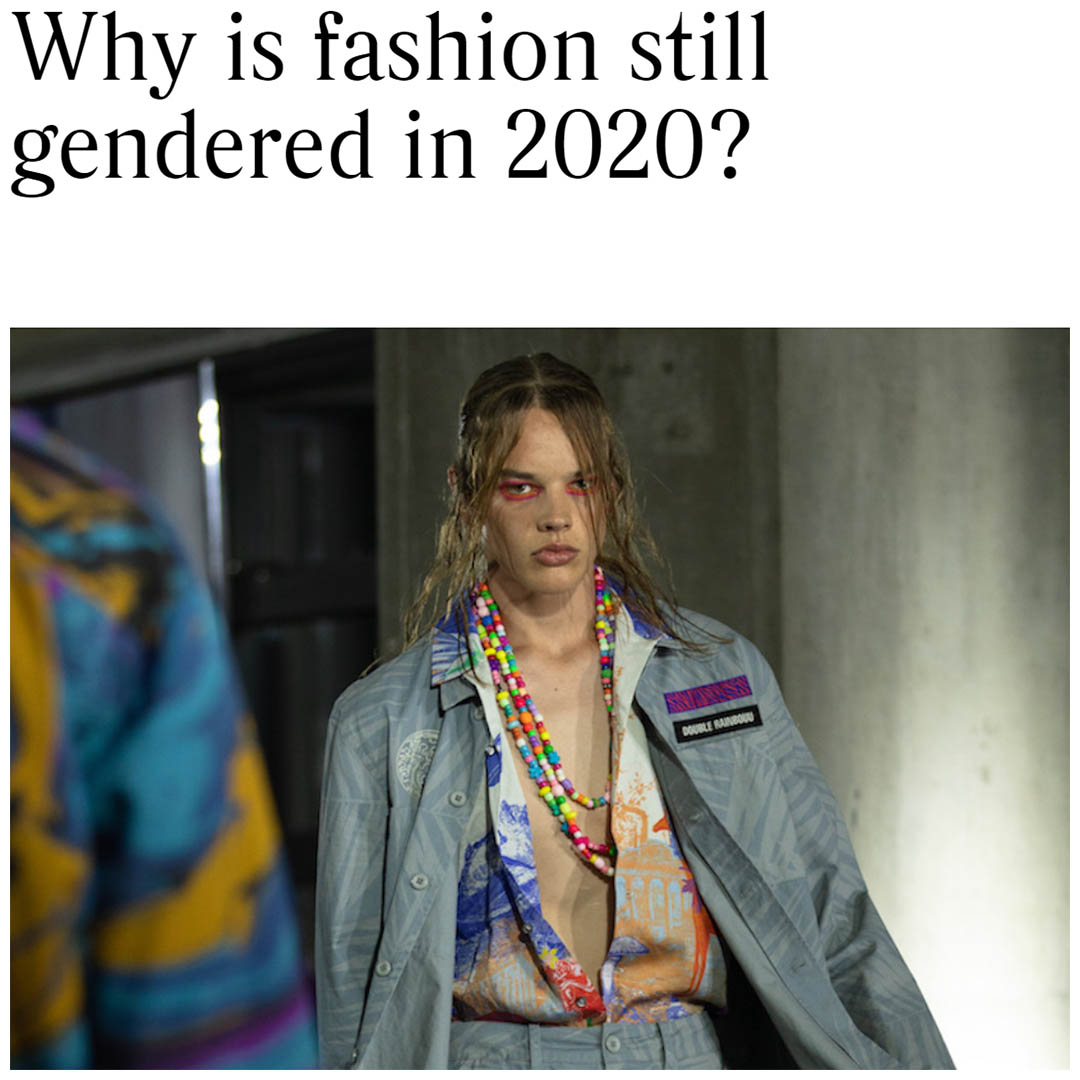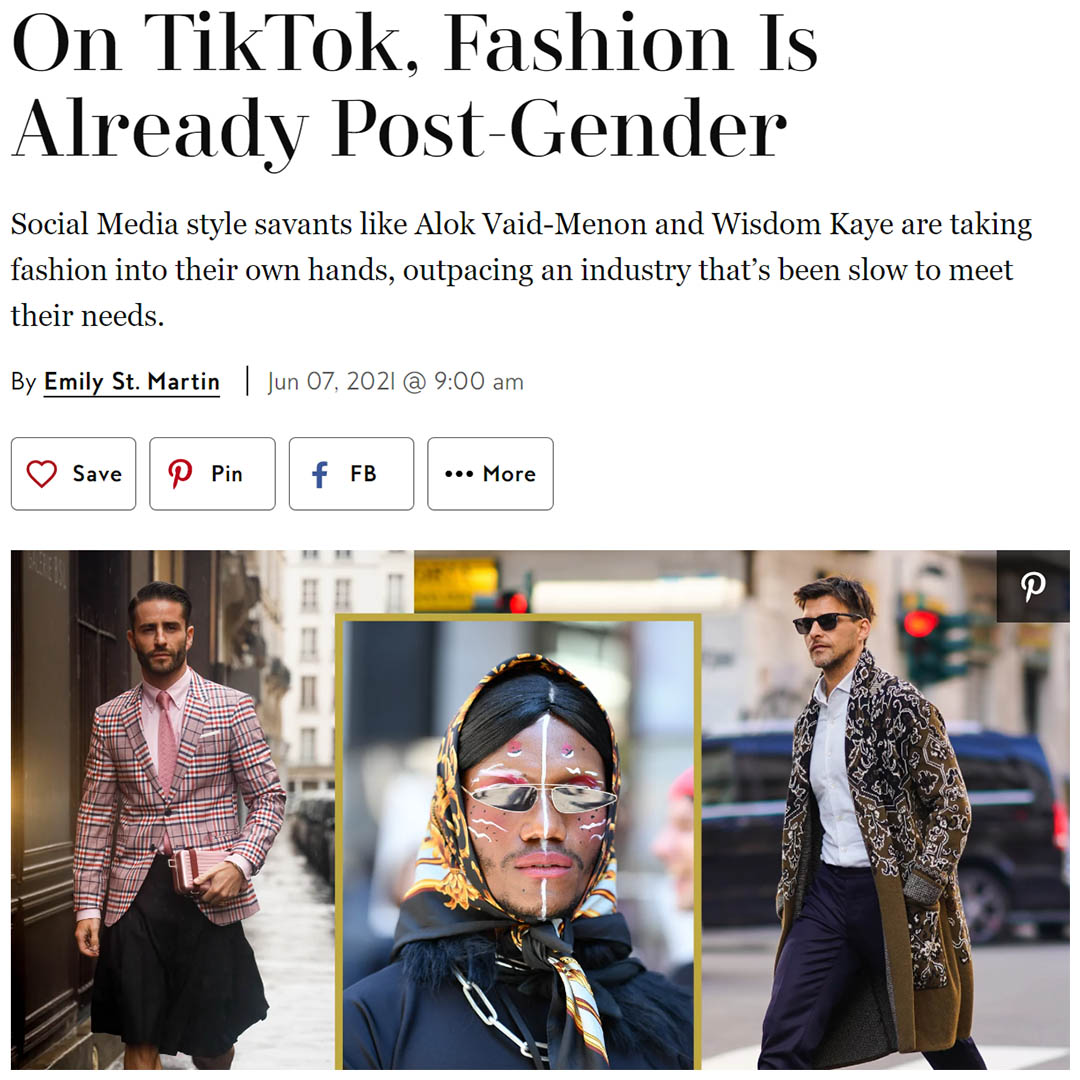Articles tagged with "Self Expression"
Women's Wear Daily magazine reports on the appearance of Lenny Kravitz at the LuisaViaRoma UNICEF Gala 2022 where his outfit, including black patent knee high heeled platform boots, once again grabbed the headlines.
From the article:
"Kravitz is not only known for his music, but for his standout style. His stylish aesthetic over the years earned him an Icon award at the 2022 CFDA Fashion Awards in November."
“Fashion is another avenue for artistic expression. There are no rules other than to be yourself. If what I’m doing connects or inspires someone to be more confident in their own skin, there’s nothing more I could ask for. It all comes from within, just be you,” Kravitz said to WWD regarding the accolade.
Original URL: https://wwd.com/eye/scoops/lenny-kravitz-unicef-luisaviaroma-gala-2022-st-barths-1235458430/
Posted: 12 March 2023
Josh Sims writing for Sphere magazine explores the topic of gender and how it's re-shaping the fashion industry as we once knew it.
From the article:
"Recent years have seen the progressive fashion world look to break away from the age-old binary paradigm of clothing for men and clothing for women, one which shapes how clothing is designed, made, marketed and sold, and which in turn can shape how people think about themselves."
"The shift, of course, has come in parallel with an often-controversial discussion in the wider culture about gender identity."
"in seeking to deconstruct the gender bias of its products, the fashion industry is also following in the footsteps of other huge industries: toys, bedding and cosmetics, for example. It’s an ethical, intellectual and, perhaps above all, an experimental exercise: just why do we continue to define certain products by gender? Should clothing be without gender, or, conversely, even seek to cater to a multiplicity of genders?"
Original URL: https://www.spherelife.com/gender-fluid-fashion-brands-uk
Posted: 6 January 2023
Do you ever get weird looks from people when you're wearing heels?
I do get looks and people's expressions are often puzzled, but then they are seeing something that they are not used to seeing so that is going to take some thought to process how they feel about it. You are breaking social stereotypes and to a lot of people this will be something new and can feel threatening to them.
If you are different, and let's face it, it's not hard to be different when you're a man wearing high heeled shoes or boots, then you are going to stand out from the crowd a little and attract some attention. The vast majority of men wearing heels don't actually want any attention, we just want to live authentically and wear the clothes and shoes which we like.
The key here is confidence. When you feel good about what you are wearing before you go out, that will show through. Express yourself authentically and you will have the rock solid belief in what you are doing. Go about your business as normal and remember that you are not responsible for the version of you that is in someone else's head - that's on them.
Think about the times when you've seen something out of the ordinary when you've been out and about. Do you look longer at it? Does your face express your confusion about what you're seeing? It's not unusual to process new things in this way.
In the countless times I've worn heels in public, I have yet to have anyone make a negative comment about them, but yes I do get people looking at them. From many other men who wear heels, the comments they receive are almost always positive. In any case, I want them to look, we need them to look, we need this to be normalised for any men who want to wear heels. That needs every one of us to be wearing heels in public every day that we can.
If you're struggling for the confidence to wear higher heels more than you would normally do in public, use some of the strategies I've provided in these Q&A posts to help. Start out with Cuban/block heels and work your way up. Once higher Cuban/block heels are more commonplace, heels for men will get slimmer and taller and before long we may well see a day when men in stilettos won't seem so unusual at all.
Posted: 3 January 2023
How can we make it normal for men to wear high heels or long boots?
1. Be visible
The single most effective thing each and every one of us can do is to be visible. The more people see men in heels, the more it will be normalised.
Every time you venture out you have an opportunity to educate more people and give them a different perspective on how they look at men in what they would normally consider women's clothes. Many people are still unaware of gender issues. Some may find it un-settling at first as we're challenging the status quo... Be kind.
2. Socialise your visibility
Being active regularly on social media is helpful in getting our message about men in heels to "cross-over" into mainstream life. YouTube, TikTok, Pinterest, Instagram and Facebook can all be effective and it's often possible to repurpose content created for one platform on another. Learn about hashtags and use them properly - they are vital to getting noticed. Make hashtags relevant to your post and make them unique to each post. Keep your content focused and on-topic, make it predominantly about your style in heels. Creating a new heels-focussed account is often a good idea if you have pictures of your pet/holidays/what you ate for dinner on your account now. Focus drives follower engagement and retention. If you're not getting (and keeping) the followers you want, make sure you're only posting about topics relevant to their interest.
We can all play our part in social media and in addition to going out there and doing it every day, our community needs us to share our shoe collections, our outfits, our public experiences with whatever level of personal expression we feel comfortable with. Being visible, loud and proud on social media is the key to effecting real change. Resist the temptation to make critical comments when your own profile is empty or has very little content - your voice will be heard louder iand more objectively if you can clearly demonstrate that you walk your talk.
3. Blog it!
Creating a blog website to blog about wearing heels and boots will reach a wider audience than Instagram alone. It can also funnel traffic to your other social media accounts.
You'll probably already have a great deal of content from your social media account (your photos etc), all you need is a little narrative to tell a good story and your website will work well in attracting visitors. Regularly promote your blog on social media.
Some great blogs on high heels and boots can be found at:
4. Ally, don't alienate
Support and ally with other minority groups. Align yourself alongside LGBTQIA+, Feminists and anyone actively gender bending and de-gendering fashion.
5. Support the community
Support each other by making positive, constructive comments on social media, cross-posting and promoting other people's posts and profiles. We'll all achieve more, faster by pulling together as a community.
6. Be gender aware
Be alert to gender-labelling of non-gendered items and call people out on it! The less gendered our world becomes, the better it will be for everyone, us heeled shoe wearers included.
7. Know your history
Educate yourself on men's heel history, fashion and gender issues, it will give you more confidence in yourself and help you develop your style.
8. The fine line between fashion & fetish
Be mindful of sexualisation - don't confuse fashion and fetish. If you have a fetish for anything, that is fine, but keep it private and keep it separate from anything fashion related.
Some things that would also be helpful, but are largely out of our control are
Seeing more men in heels in mass-media Movies, TV series, newspapers and magazines and not just because they are wearing heels, but as matter of fact every day fashion. It's time to change-up the narrative from men in heels being there for shits-and-giggles, because frankly that's getting boring.
Older generations appreciating that the norms that they live by are not the norms that WE live by. We're going to break your norms because they don't have the same value to us as they did for you.
Comments from our readers
We had some great comments on this question posted on our Instagram page for previous posts of this Q&A issue, from both men and women...
"I feel the only way to that is to bring back Cuban heels to mainstream men’s fashion like skinny jeans. I hate to be the bearer of bad news but unless we start with mainstream Cuban heels, high heels will have no chance in men’s mainstream fashion."
"Sadly society have stereotypes about this and wants to quietly shame us for this." ...and we say "Thanks, but we say to hell with gender stereotypes! they are just an out-dated product of the patriarchal society that we live in. The shame is on the people who perpetuate them!!"
"Lead by example. I live in a small town, but still wear heels and/or boots - and dresses or skirts - almost every day. And reactions are almost only positive! ❤️ Even the few, that gave me strange looks, in the beginning are now used to it, and see it as a natural thing, that I dress the way I prefer! 🙏"
"Be confident. And be visible. That makes it fit the norm."
"The more men wear them, the more normal it becomes!"
"Same as guys wearing any formerly masculine style that got appropriated by women...guys just have to get out in them as men, even if "looking" feminine. Clothing does not change one's sex."
"You just do it. I make it normal for myself"
"It will take companies to start making more larger sizes. And market, market, market to men too. Just like Birkenstock big buckle sandals. They stop at size 11. They need to at least go up to 16. I would love to get several of them but no size 14. I wear a size 12 in men's. So that's what it's going to take. We can't wear drag heels and boots all the time. 'Even though I love them' 🙂"
"Normal is majority... more the merrier scenario. Acceptance will return if retail label some high heels as MEN'S. It will take the major retailers to sell them and then the men with the balls to wear them. It will become normal again. If the mullet haircut can return... anything is possible if enough embrace the trend and the trend is marketed"
"As far as I’m concerned it already is, I do it and I consider myself to be normal lol 😂"
"Honestly try to avoid anger when people make comments or laugh. We have to stand tall shoulders back and be proud. No matter what and where your background is."
"You never will, what is normal to one person will not be to the next. You just have to do what feels right for you and if it doesn't please some people that's their problem and if they get over it then that's up to them. You can't truly define normal."
"The behaviour and style of the mainstream is the 'normal'. But minority groups with a goal have the chance for change something. For example women in trousers. For men in skirts, heels, leggings or anything else of female clothing it's the same. We have the right to wear it and we can do. Without Instagram or other platforms in the web, every man in 'wrong' clothes was the only person who do this. With the visibility in the web, every man can see there are any other man doing the same. And the mainstream also see that there more men doing this. And while these men doing and connecting, the trend hunter of the big companies seeing it too. For an example, three years ago ASOS didn't sell swim thongs for men. Actually the do and not only normal thongs, tie side thongs and bikinis for men. Buy what you want, wear what you want with confidence and write reviews at the retailer websites. If the companies see the communication from the customer, they think about developing and offer products for men. ASOS started to sell their shoes in the women department in bigger sizes. They well spotted the trend. It's a crosslinked evolutions starting with our steps which need a little bit self-confidence: 1. Buy the item, with the mindset "it's normal what I'm doing here." 2. Wear/use the item with the mindset "It's normal what I'm doing here." 3. React to weird views or dumb comments/question with the attitude and mindset "I really don't understand you because it's normal what I'm doing here." 4. Ask the employees in the store for assistance when you need and act normal when trying on with the attitude/mindset "It's normal what I'm doing here, so why should I not or should I hide." Sounds easier than it is, but it works and brings you in a positive mood/vibes. Let us start it."
Posted: 7 December 2022
Very Well Mind website explores the term "gender expansiveness", looking at its origins, what it means and how it's being used to classify people who cross normal lines of gender expression.
From the article:
"Gender expansiveness is an umbrella term for any expression of gender that falls outside of society's current gender binary standards."
"One person who has made a name for himself just by wearing clothing meant for the opposite gender is Eli Cohen, an author, speaker, fashion advocate, and "self-expression facilitator." He founded an organization called Spacious Human, with the tagline "Experiencing Expansiveness." Cohen is a cisgender man who began wearing dresses and skirts after the age of 50. He now teaches others how to explore their gender and their expressions of it."
"It can be challenging to put yourself out there in a way that makes you appear different than others, and you're opening yourself to judgment just by looking different or noticeable. However, some people feel that it's more important that society sees more than one version of humanity and expression, so they take on that potential judgment."
"Consider doing your research before asking anyone in your life about their gender expression. This saves others from having to perform emotional labor for you. It is considered polite to not ask people questions you could easily find the answers to yourself."
Original URL: https://www.verywellmind.com/what-is-gender-expansiveness-6362960
Posted: 2 December 2022
Absolutely not... but of course you absolutely can if you want to!
That goes for all different types of shoes too. Flats, stilettos, Cuban heels, kitten heels, wedges, block heels and the rest. What matters is not what else you wear with them but that you feel happy and confident wearing them. Putting on a pair of heels does not make you a crossdresser (a term often used predominantly for men, though rarely applied to women) and many regular guys of all sexual orientations have worn heels throughout history. Many celebrities have recently brought about a renaissance for men wearing heels, skirts, dresses, leggings or make-up, though you don't have to be a celebrity to still have fun with what you wear.
The same really goes for other things you'd not normally considered as men's fashion. You don't have to wear heels if you wear a skirt or dress. You don't have to wear a skirt, dress or heels if you wear make-up.
Have fun and experiment with your style. Be bold but consciously pick items that you would definitely wear repeatedly, with confidence outside your home. If you're un-sure, buy pre-loved items as if you change your mind after wearing them you can always sell them on again for around the same value as what you paid for them, and it's also more environmentally sustainable.
What have you worn (in public) recently that you would not normally consider to be menswear? What was your experience? Head to our Instagram page to post your comments.
Posted: 3 November 2022
It's often a simple notion in your own head... "I like to wear heels and would like to wear them all the time". Ultimately you don't care what others think. You could be gender nonconforming. But what does that mean? This article from Psych Central unravels the meaning and puts it into context with other terms such as non-binary, genderqueer and genderfluid.
"Gender nonconformity is a way of expressing rejection of societal gender roles and expectations.
It isn’t automatically connected to a person’s gender identity or sexuality. Anyone of any gender identity can be gender nonconforming.
It’s best to inquire about how a person identifies and what pronouns they use rather than making any assumptions."
Original URL: https://psychcentral.com/health/gender-nonconforming
Posted: 27 October 2022
This Gotham magazine article features the debut of Christian Louboutin's "Our Angels" range of Gender-Neutral heels in inclusive sizing.
"Famed French luxury designer Christian Louboutin hears the cry for genderless shoes and styles"
"The styles are bold, to be sure, but in a wide range of sizes, they leave room for every big personality, regardless of gender identity or expression."
"You might want to try the leopard-print stage boots, made from kid leather and pony hair in brown."
"each aims to blend elegance and edge with a personal sense of self-expression."
"The shoes will range in sizes from 36 to 46, becoming the fashion house’s most extensive size range to date."
We think they look amazing. We'd love to hear what you think!
Original URL: https://gothammag.com/christian-louboutin-genderless-our-angels-boots-bags
Posted: 19 September 2022
Today, we take a look back to 2020 and a Harpers Bazaar magazine interview with Harris Reed (@Harris_Reed), the then up and coming designer who is now probably best known for styling Harry Styles for the cover of Vogue magazine. That moment was a pivotal moment in Harris's career as it instantly catapulted him into the spotlight.
"I’d like to eradicate the categories of menswear and womenswear,” Reed says. “Fluidity offers an alternate way of being, crossing and merging masculine and feminine.”
Harris certainly has a way of making what we would normally call feminine styles and presenting them in a way in which we can call them gender neutral. He is definitely one to watch for the re-shaping of the fashion world we currently know.
...and if that's not enough gender-bending non-binaryness for you, to take a look at @FluidByHarrisReed for his curated collection of classic gender-bending looks from the stars.
Original URL: https://www.harpersbazaar.com/fashion/designers/a34458195/gender-fluid-fashion-harris-reed-no-sesso-art-school/
Posted: 3 September 2022
Is the term ‘Cross-dresser’ out-dated in today’s society?
Before we can answer that question, some definitions may be useful.
Cross-dressing: is the act of wearing items of clothing not commonly associated with one's sex. Cross-dressing has been used for purposes of disguise, comfort, comedy, and self-expression in modern times and throughout history.
Almost every human society throughout history has had expected norms for each gender relating to style, colour, or type of clothing they are expected to wear, and likewise most societies have had a set of guidelines, views or even laws defining what type of clothing is appropriate for each gender.
The term "cross-dressing" refers to an action or a behaviour, without attributing or implying any specific causes or motives for that behaviour. Cross-dressing is not synonymous with being transgender.
Another term for cross-dressing is Transvestitism. Someone who engages in Cross-dressing/Transvestitism is called a Cross-dresser(CD)/Transvestite(TV), although the term Transvestite is now commonly considered outdated and disrespectful. The term Transvestite (often shortened to the slang term "Tranny") was historically used as a slur against people who wore clothes of the opposite sex. Cross-dresser is now a much more accepted term. Cross-dresser was coined by the transgender community.
MtF and FtM Cross-dresser: A man who dresses in women's clothing is a male to female (MtF) cross-dresser. a woman who dressing in men's clothing is a female to male (FtM) cross-dresser. For women, the term is seldom used and the wearing of trousers/pants/men's shirts is often discounted as cross-dressing. This is because in our current society, male clothing is often considered gender-neutral. Therefore when someone uses the term "cross-dresser", the focus shifts mainly towards a MtF cross-dresser.
With those definitions made, two additional points are important to recognise:
a). Cross-dressing as it relates to Transgender: Wearing clothes intended for the opposite sex does not mean that the person identifies as the opposite sex. It is different from being Transgender or Transsexual. When transgender people dress according to their gender identity it is not necessarily the same as cross-dressing.
It is important to know that a cross-dresser does not necessarily have body or gender dysphoria (gender dysphoria means feeling uncomfortable with their body and gender they were born with), they are perfectly happy with their gender assigned at birth and have no desire to change their sex, but simply enjoy being able to cross-dress from time to time. However, Transgender describes people who feel that their gender identity is different from their biological sex.
Most transgender people do not appreciate being called cross-dressers, and for good reason. As they are wearing clothes of their own gender identity they consider themselves, and should be considered by others as the gender they are dressing in. A Transgender woman wearing women's clothes is not a cross-dresser, nor is she a drag queen. She is just a woman. Similarly, a Transgender man, wearing men's clothes is not a cross-dresser, nor is he a drag king. He is just a man.
b). Cross-dressing as it relates to Drag: A cross-dresser should not be confused with drag queens/kings. Drag is a special form of performance art based on the act of cross-dressing. Drag queens are usually male performance artists who dress in female character. Drag Kings are mostly female performance artists who dress in male character.
Now, to get down to answering the question...
As gender refers to the socially constructed roles, behaviours, expressions and identities of girls, women, boys, men, and gender diverse people we can deconstruct that concept. While the term Cross-dresser works well for some people, as it has for years, for many others they do not feel that it works well for them. For non-binary or agender people (who don't identify with the gender binary of male & female) who want to wear certain clothes as part of their gender expression, feel that the term is obstructive and often offensive towards them. With the realisation that clothes have no gender, a skirt or a pair of trousers are essentially just coloured and textured fabric cut and sewn into a garment. The clothes know nothing of gender other than that assigned to them by their creator. The same, of course applies to shoes - high heels are not women's shoes... they are just high heels.
A growing number of people believe that today's socially constructed gender stereotypes don't serve us well in enabling fully inclusive gender expression that recognises our diversity. With the central fact that gender is a social construct, gender labelling of clothing is also a therefore also social construct and can equally be challenged and deconstructed. Gender labelling of clothing perpetuates the construct, but in more recent years this is slowly changing with manufacturers and retailers removing, or neutralising gender labelling on clothes and on signage in stores.
Manufacturers and retailers, now too numerous to mention, are also making items of clothing more traditionally intended for a single sex for both sexes, while recognising that the key differentiator is not actually our biological sex, but our body shape. Does the term cross-dresser still stand up when the clothes have no gender labels? Maybe not.
All clothing, of whatever shape, colour, texture or style has been worn by both sexes as normal daily wear at some point in history, so why do we have gendered clothing now? Visual communication is one of the many reasons we dress the way we do. Our gender identity is expressed visually through what we wear, as can be our social status or rank within an organisation. Sometimes our visual appearance, what we wear, make-up, hairstyle, skin colour, whether rightly or wrongly, can trigger others around us through our learned and often habituated social conditioning to make a judgement on how they should interact with us. Aside from organisational ranking, we should not treat people differently because of their appearance. Everyone is born equal and should be treated as such. Does what they wear really matter more than their actions and achievements as a person?
In conclusion, the term Cross-dresser is fine for a socially constructed world in which there is a gender binary, but it does not work well in a non-binary world where gender is expressed on a spectrum and where many believe that clothing has no gender to start with. When it comes to the use of the term today, if the logic used to describe a man in "women's" clothes as a crossdresser does not hold when applied to a woman wearing "men's" clothes - it's not logic, it's sexism.
When clothing has no gender there are no lines to "cross", hence no cross-dressing and why we therefore believe that the term cross-dresser is out-dated and should decline in use.
Posted: 27 July 2022
A short press-release to cover the launch of Steve Madden's Inclusive sizing collection of shoes and boots in EU sizes 42-45. There are some great styles there. Check them out via our Retailer Directory at https://www.mens-heels-revolution.com/RetailerDirectory?Name=Madden
Original URL: https://www.so-pr.com/steve-madden-launches-inclusive-collection/
Posted: 27 June 2022
Original featured on Men's Heels Revolution a couple of weeks ago, now we have the full, original interview with Charoline Wenke and Anders Harder Bjerresgaard from ALT for damerne magazine, translated via Google Translate from Danish to English
The article introduces us to the couple and their relationship journey, from their early days exploring Anders' gender fluid fashion style and his passion for high heels to present day, and some of the triumphs and challenges they have encountered along the way. It's not always been easy, but they are both very happy together and want to share their story in the hope that it will inspire others to explore their self-expression too.
Anders: "I could feel people's awkward reactions when I showed interest in clothes, shoes and makeup, and so I very quickly stopped saying it out loud and instead cultivated it in secret. When there was an EVERYTHING for the ladies at home, I looked in it when there were no others nearby, and the same with, for example, Magasin's Christmas catalog, where I looked at the women's clothes. I thought it was the most beautiful. There is not much variation in men's clothes. It is black, white "Blue and maybe green and brown. Whereas women's clothing is available in all colors, patterns and qualities. Everything is allowed in women's clothing that is simply more bling."
Charoline: "He said: 'I really like high shoes, and I really like to walk in them.' When he drove home afterwards, I thought hmmm ... But pretty quickly this sentence came to me:" "Well, it's just shoes." We just had a great time together, we had become really happy with each other, and I thought: We must be able to find out. "
Anders: "Part of the teaching was precisely about inhibiting beliefs, and I had had a belief that the sky would fall if I stood one hundred percent by myself. And suddenly it dawned on me that when I got home and was completely fresh, then it was because, in Copenhagen, I stood by myself and walked in the high shoes.I thought, shut up, I'm really just a puppet in a performance I myself have created based on my own beliefs ? What will happen if I just ARE myself? When I started thinking like that, I almost sensed from one day to the next how much more energy and joy I would get in my life if I started standing by myself all the time. "
Charoline: "Shortly after, we took a trip to Hamburg, and at that time, Anders was still only wearing menswear when others saw him. But when he unpacked in the room, he lined up just 15 pairs of shoes with high heels, and I was like ... well, okay. "
Charoline: "Today I find it very annoying that I have been influenced by the opinions of others. But that says something about how strong it is. I myself come from a very unjudgmental family who have taken so well against Anders. If only I am happy, they are happy, and then the clothes do not matter. But in the face of the reactions of the outside world, I have been surprised. I remember an episode in Berlin, where we stood in line in a store, and behind the clerk there was a mirror so I could see how those standing behind us in the queue were pointing and laughing. It was just too much and I said to Anders "come, now we're just going out, I can not do this" . "
Charoline: "the message we want to convey in this interview is actually that we is only at the finish line when it is no longer interesting how Anders dresses."
Anders: "I have only met support. Or at worst neutrality. The first time I wore heels, my boss said:" You got new boots, Anders ", and then she went on to get coffee. Otherwise I have just been told that “shut up you look sharp” or “wow, you give it gas.” I'm probably well helped by sitting in a creative area of product and marketing development, because that's probably the place in an organization where the ceiling is highest and where you like to think a little crazy. People are very openminded. "
Anders: "I almost never experience this as a problem. I almost never get negative comments from women. They are always very welcoming and often come with comments like" I love your boots "or" what beautiful nails ". Negative comments or shaking of the head usually always come from men, and I think that's because they are challenged in their views on how to be a man. "
Posted: 18 June 2022
Hypebae introduces Stixx (@StixxInTheCity), Wisdom Kaye (@Wisdm) and Henry Bae (@HenryBae), three men who are helping to re-define how we think about fashion today and in particular how heels are crossing the gender divide once again.
Original URL: https://hypebae.com/2022/4/men-heels-inclusive-fashion-gender-lgbtq-rick-owens
Posted: 15 June 2022
ABC News reports in Australia on the debate for the Religious Discrimination Bill where Stephen Jones MP delivered an emotional speech in parliament highlighting the struggles the LGBTQIA community they face every day, highlighting in particular his own son Paddy, who frequently wears gender non-conforming clothes, including high heels.
Original URL: https://www.abc.net.au/news/2022-02-10/paddy-stephen-jones-son-speech/100819064
Posted: 12 June 2022
Danish magazine 'BT' brings us an interview with Charoline Wenke and Anders Harder Bjerresgaard, originally published in 'ALT for the ladies' magazine and translated here from Danish via Google Translate.
The article introduces us to the couple and their relationship journey, from their early days exploring Anders' gender fluid fashion style and his passion for high heels to present day, and some of the triumphs and challenges they have encountered along the way. It's not always been easy, but they are both very happy together and want to share their story in the hope that it will inspire others to explore their self-expression too.
Posted: 7 June 2022
CNN reports on the rise in platform heel wearing and explores some of the ideas why this is an emerging trend for both women and men.
Original URL: https://edition.cnn.com/style/article/platform-shoes-fashion-trend/index.html
Posted: 31 May 2022
We are living the gender revolution, so why don't men wear skirts, make-up, fancy tops or high heels? NoKill magazine (@nokillmag) takes a deeper look at the construct we have built around gendered clothing and ultimately declares that it's time to degender fashion.
Original URL: https://www.nokillmag.com/articles/men-in-skirts-its-time-to-degender-fashion/
Posted: 25 April 2022
@PrettyBusinessWorld introduces Ashley Maxwell-Lam, an insurance company worker who wears stiletto heels to work every day. He describes it as feeling comfortable, invincible, powerful and in control. As the article says, he didn't ask for permission, though he did say up-front what his intentions were. He "finds it ridiculous that in society it is only acceptable for women to wear high heels".
Original URL: https://prettybusinessworld.com/man-in-a-suit-and-stiletto-heels-at-work/
Posted: 1 February 2022
them. magazine interviews four queer, disabled individuals who discuss their right to self-expression and need for the fashion industry to do better.
Original URL: https://www.them.us/story/degender-fashion-movement-cant-leave-out-disabled-people
Posted: 29 January 2022
Kidadl takes some of the confusion out of raising a child that wants to wear clothes not normally associated with their gender. Kids are born open-minded and are taught social norms by us, like what clothes a boy or a girl normally wears. This is also reinforced by their experience in the world around them. While this article is aimed at boys wearing girls clothes, it applies equally to girls wearing boys clothes, although through deeply engrained patriarchal practice, that has not been seen as carrying the same social stigma. The article concludes that it's fine for a boy to wear "girls" clothes, which it should, as clothes have no gender, and that we should encourage our kids to live as their authentic selves.
It's encouraging to see articles like this as it does seem to show that attitudes towards gender and clothing are changing. Our children are our future hopefully they carry a new hope for future fashion.
Original URL: https://kidadl.com/articles/when-boys-wear-girls-clothes-should-i-be-worried
Posted: 17 January 2022
DailyArt magazine looks back in time to explore the origins of High Heels. Often a surprise for many people, heels originated in Persia in the 10th Century and were worn by men until the 18th Century. Enlightenment put and end to that 800 year reign, but started making a comeback in the latter half of the 20th Century. The article ends on a positive note for all.
Original URL: https://www.dailyartmagazine.com/men-in-heels/
Posted: 5 January 2022
This article from Fashion United reports on the results of a panel discussion organised by the Hetrick-Martin Institute and how the fashion industry needs to adapt to accommodate a rapidly growing demand by the gender non-conforming demographic. How can the shopping experience be enhanced and growth managed in a sustainable way? The article explores the options.
Original URL: https://fashionunited.uk/news/fashion/the-future-of-gender-non-conforming-fashion/2019032742414
Posted: 4 December 2021
This great is a great article by @LandonPeoples for @Refinery29, which quite rightly points out that if you have an issue with men in heels, you really need to take a good hard look in the mirror as maybe that's "a you problem". I can't paraphrase any better, so I'm going to tempt you with a few of the best bits...
"The inquiry has become more of a reflection of the insecurities of those asking it than the actual subjects who wear them."
"A man's interest in style, no matter the color of their shirt or the height of their heel, should not be a litmus test for their masculinity"... "The feat of wearing heels, even a chelsea boot, should be celebrated as an act of bravery."
Great article. Well worth a read.
Original URL: https://www.refinery29.com/en-us/2017/08/166952/harry-styles-history-men-in-heels-photos
Posted: 23 November 2021
If you can get past the click-bait title without blowing a blood-vessel, Jill Maurer (@jillmaurerdesigner) presents an honest and entertaining video, explaining why “Men can’t wear heels”... or can they? You’ll have to watch it and find out!
Original URL: https://www.youtube.com/watch?app=desktop&v=YgVuvWc-jCI
Posted: 25 August 2021
This article from @FootwearNews honours what would have been David Bowie's 74th birthday by taking a look back at some of his wildest onstage show looks. Bowie was known for his gender bending style and his footwear was no exception.
Original URL: https://footwearnews.com/2021/fashion/celebrity-style/david-bowie-birthday-crazy-onstage-shoes-1202727815/
Posted: 5 July 2021
This article from Fashion Journal in 2020 asks a pointed question “Why is fashion still gendered in 2020?” and suggests that segreated clothing in stores may soon be a thing of the past. It highlights Androngenous dressing as one factor driving the change and how we are re-thinking the purpose of clothing.
Original URL: https://fashionjournal.com.au/fashion/fashion-gendered-2020/
Posted: 2 July 2021
This article by @edsullivan2 from the brilliant InStyle magazine (@instylemagazine) explores how spaces like TikTok, Instagram and YouTube have given androgonous stylists, post-gender visionaries and queer creatives the freedom to embrace their authentic selves, tools to build a platform, and potential to have a wide reach and impact. We see how people like @tripleminor, @wisdm, @alokvmenon, @sammyratelle, @elierlick, @jayybeech, @bethanycmeyers, @nicotortorella and @patrickchurchny are successfully challenging fashion boundaries and taking fashion influence from the streets to social media.
Original URL: https://www.instyle.com/fashion/clothing/tiktok-gender-free-fashion
Posted: 20 June 2021
